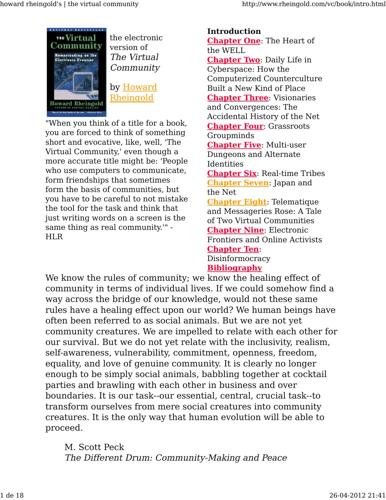
Howard Rheingold
by
The Virtual Community Homesteading on the Electronic Frontier-Perseus Books (1993)
Published 26 Apr 2012
Because of the sharp focus on communications and information technologies at the highest levels of Japan's industrial policymakers, the question of Japan and the Net is perhaps the most important critical uncertainty in the shaping of tomorrow's Worldnet read on to 26-04-2012 21:45 howard rheingold's | the virtual community http://www.rheingold.com/vc/book/6.html Chapter Seven: Japan and the Net Return to rheingold's brainstorms 22 de 22 26-04-2012 21:45 howard rheingold's | the virtual community 1 de 25 the electronic version of The Virtual Community by Howard Rheingold "When you think of a title for a book, you are forced to think of something short and evocative, like, well, 'The Virtual Community,' even though a more accurate title might be: 'People who use computers to communicate, form friendships that sometimes form the basis of communities, but you have to be careful to not mistake the tool for the task and think that just writing words on a screen is the same thing as real community.'"
…
Many countries will soon face the conflict that Japanese and French telecommunications planners must address: to refuse to join the Net in its widest sense and face being left behind, or to join the Net and face social upheaval. read on to Chapter Nine: Electronic Frontiers 26-04-2012 21:45 howard rheingold's | the virtual community http://www.rheingold.com/vc/book/8.html and Online Activists Return to rheingold's brainstorms 22 de 22 26-04-2012 21:45 howard rheingold's | the virtual community 1 de 36 the electronic version of The Virtual Community by Howard Rheingold "When you think of a title for a book, you are forced to think of something short and evocative, like, well, 'The Virtual Community,' even though a more accurate title might be: 'People who use computers to communicate, form friendships that sometimes form the basis of communities, but you have to be careful to not mistake the tool for the task and think that just writing words on a screen is the same thing as real community.'"
…
howard rheingold's | the virtual community 1 de 18 the electronic version of The Virtual Community by Howard Rheingold "When you think of a title for a book, you are forced to think of something short and evocative, like, well, 'The Virtual Community,' even though a more accurate title might be: 'People who use computers to communicate, form friendships that sometimes form the basis of communities, but you have to be careful to not mistake the tool for the task and think that just writing words on a screen is the same thing as real community.'" HLR http://www.rheingold.com/vc/book/intro.html Introduction Chapter One: The Heart of the WELL Chapter Two: Daily Life in Cyberspace: How the Computerized Counterculture Built a New Kind of Place Chapter Three: Visionaries and Convergences: The Accidental History of the Net Chapter Four: Grassroots Groupminds Chapter Five: Multi-user Dungeons and Alternate Identities Chapter Six: Real-time Tribes Chapter Seven: Japan and the Net Chapter Eight: Telematique and Messageries Rose: A Tale of Two Virtual Communities Chapter Nine: Electronic Frontiers and Online Activists Chapter Ten: Disinformocracy Bibliography We know the rules of community; we know the healing effect of community in terms of individual lives.
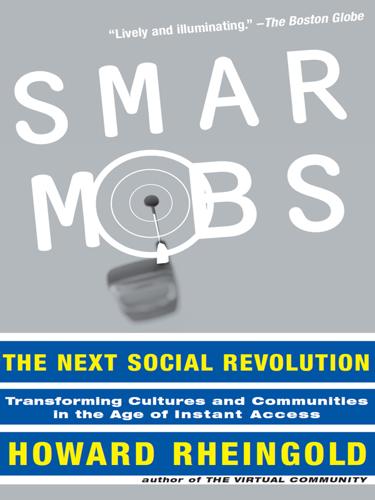
Smart Mobs: The Next Social Revolution
by
Howard Rheingold
Published 24 Dec 2011
Douglas Rushkoff, author of Coercion, Media Virus, and Nothing Sacred, Professor, New York University’s Interactive Telecommunications Program “Howard Rheingold has always been about ten years ahead of the rest of us, but Smart Mobs may be his most visionary book yet. Anyone interested in the future of technology and society will find this book fascinating reading.” Steven Johnson, author of Emergence and Interface Culture “Smart Mobs is hot on the trail of a technology that is hot-wiring social networks around the world, with unexpected and fascinating implications for all of us.” David Weinberger, author of Small Pieces Loosely Joined and co-author of The Cluetrain Manifesto “I congratulate Howard Rheingold on his very thorough summary of one of the greatest transformations of human society—perhaps even more profound than the development of writing.”
…
Sir Arthur C. Clarke SMART MOBS The Next Social Revolution HOWARD RHEINGOLD To Hannah Geraldine Rheingold, my mother and teacher, who gave me permission to color outside the lines: Thank you, Mom. Many of the designations used by manufacturers and sellers to distinguish their products are claimed as trademarks. Where those designations appear in this book, and where Perseus Publishing was aware of a trademark claim, the designations have been printed in initial capital letters. Copyright © 2002 by Howard Rheingold All rights reserved. No part of this publication may be reproduced, stored in a retrieval system, or transmitted, in any form or by any means, electronic, mechanical, photocopying, recording, or otherwise, without the prior written permission of the publisher.
…
<http://nooper.co.jp/showcase/gallery.php?s=4&l=en> (24 January 2002). 2. Karlin Lillington, “Mobile but Without Direction,” Wired News, 21 September 2000, <http://www.wired.com/news/business/0,1367,38921,00.html> (28 January 2002). 3. Howard Rheingold, Tools for Thought: The History and Future of Mind-Expanding Technology (New York: Simon & Schuster, 1985). 4. Howard Rheingold, The Virtual Community: Homesteading on the Electronic Frontier (Reading, Mass.: Addison-Wesley, 1993). 5. Arturo Bariuad, “Text Messaging Becomes a Menace in the Philippines,” Straits Times, 3 March 2001. 6. Lisa Takeuchi Cullen, “Dialing for Dollars,” Time Magazine 157 (22), 4 June 2001, <http://www.timeinc.net/time/interactive/business/money_np.html> (4 February 2002).

Valley of Genius: The Uncensored History of Silicon Valley (As Told by the Hackers, Founders, and Freaks Who Made It Boom)
by
Adam Fisher
Published 9 Jul 2018
Almost all the things that we’ve now come to see as a marked characteristic of this time emerged then, and we were dealing with it for the first time. Howard Rheingold: And in some ways it was a forecast of not just the best of what online community could offer but also the worst. You know, people who just like to snipe at you. Kevin Kelly: This was years into it but at one point Stewart basically quit The Well, because as the leader of this enterprise—he really wasn’t the leader but as the figurehead—he was just getting trolled. He was getting pounded and harassed. And it was no fun and so he thought, No fun? I’m out of here. Howard Rheingold: Stewart got irritated, and who can blame him? He created the place.
…
But it ossified… Fabrice Florin: And a lot of the intellectuals that were sharing ideas on The Well went on to branch out into different areas. But you can really trace back a lot of the origins of this new movement to The Well. A lot of the folks were there. Howard Rheingold: I remember I got a friend request on Facebook early from Steve Case and I said, “I know who you are. But why do you want to friend me?” And he said, “Oh, I lurked on The Well from the beginning.” So I think, yes, it did influence things. Larry Brilliant: Steve Jobs was on it—Steve had a fake name and he lurked. Howard Rheingold: Steve Jobs, Steve Case, Craig Newmark: They would all say that they were informed by their experiences on The Well. Fabrice Florin: The Well was the birthplace of the online community.
…
Tom Zimmerman: Then Young Harvill and Young’s wife, Ann, started working on these bodysuits instrumenting the whole body. David Levitt: People, of course, like new technology and they quickly said, “What are the sexual possibilities?” Howard Rheingold: A lot of it was, “Okay, we’re going to have sex at a distance through computers somehow.” David Levitt: The term teledildonics quickly became common. Howard Rheingold: I got so much weird attention for that one word. There were, I’ll tell you, journalists from all over the world wanted to talk about teledildonics for a little while. It was part of this cyberculture vision, the Mondo 2000 vision.
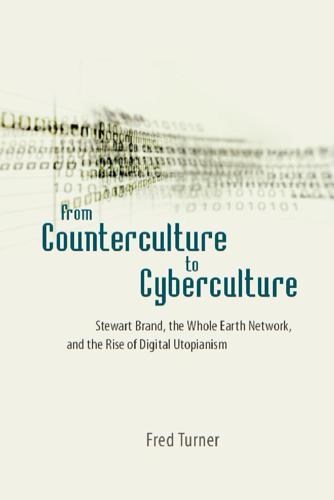
From Counterculture to Cyberculture: Stewart Brand, the Whole Earth Network, and the Rise of Digital Utopianism
by
Fred Turner
Published 31 Aug 2006
Basch, “Living on the Net.” 34. Rheingold, “Slice of My Life in My Virtual Community,” 425; Howard Rheingold, “Da WELL Been Beddy, Beddy Goot to Me,” post 6, December 7, 1989. 35. humdog, “Pandora’s Vox,” 438 –39; Coate, “Cyberspace Innkeeping.” Marc Smith notes that in 1992, 50 percent of the contributions to the WELL came from 70 people—approximately 1 percent of the overall membership. See Smith, “Voices from the WELL,” 29. 36. Coate, “Cyberspace Innkeeping”; Basch, interview, August 8, 2004. 37. Howard Rheingold, interview, July 20, 2001; John Perry Barlow, interview, August 25, 2003; John Coate, interview, August 25, 2003. 38.
…
For all of their help, I’d like to thank Bob Albrecht, Dennis Allison, John Perry Barlow, Reva Basch, Keith Britton, Lois Britton, John Brockman, Michael Callahan, John Coate, Doug Engelbart, Bill English, Lee Felsenstein, Cliff Figallo, David Frohman, Asha Greer (formerly Barbara Durkee), Katie Hafner, Paul Hawken, Alan Kay, Kevin Kelly, Art Kleiner, Butler Lampson, Liza Loop, John Markoff, Jane Metcalfe, David Millen, Nancy Murphy, Richard Raymond, Danica Remy, Howard Rheingold, Louis Rossetto, Peter Schwartz, Mark Stahlman, Gerd Stern, Shirley Streshinsky, Larry Tesler, Paul Tough, Jim Warren, and Gail Williams. Most of all, I thank Stewart Brand, whose openness to this project has been a lesson in itself. I am also grateful to a number of people and institutions for permission to quote conversations and to reprint previously published material.
…
In 1968 Brand brought members of the two worlds together in the pages of one of the defining documents of the era, the Whole Earth Catalog. In 1985 he gathered them again on what would become perhaps the most influential computer conferencing system of the decade, the Whole Earth ’Lectronic Link, or the WELL. Throughout the late 1980s and early 1990s, Brand and other members of the network, including Kevin Kelly, Howard Rheingold, Esther Dyson, and John Perry Barlow, became some of the most-quoted spokespeople for a countercultural vision of the Internet. In 1993 all would help create the magazine that, more than any other, depicted the emerging digital world in revolutionary terms: Wired. By recounting their history, this book reveals and helps to explain a complex intertwining of two legacies: that of the military-industrial research culture, which first appeared during World War II and flourished across the cold war era, and that of the American counterculture.

The Innovators: How a Group of Inventors, Hackers, Geniuses and Geeks Created the Digital Revolution
by
Walter Isaacson
Published 6 Oct 2014
Justin Hall, “Justin’s Links,” http://www.links.net/vita/web/story.html. 57. Author’s interviews with Justin Hall, Joan Hall. 58. Author’s interview with Howard Rheingold; Howard Rheingold, The Virtual Community (Perseus, 1993). 59. Author’s interviews with Justin Hall, Howard Rheingold; Gary Wolf, Wired—A Romance (Random House, 2003), 110. 60. Scott Rosenberg, Say Everything (Crown, 2009), 24. 61. Rosenberg, Say Everything, 44. 62. Justin Hall, “Exposing Myself,” posted by Howard Rheingold, http://www.well.com/~hlr/jam/justin/justinexposing.html. 63. Author’s interview with Arianna Huffington. 64. Clive Thompson, Smarter Than You Think (Penguin, 2013), 68. 65.
…
The display of his computer terminal was projected onto a twenty-foot screen behind him. “I hope you’ll go along with this rather unusual setting,” he began. He wore a microphone headset that a fighter pilot might use, and he spoke in a monotone, like a computer-generated voice trying to emulate the narrator in an old movie newsreel. Howard Rheingold, a cyberculture guru and chronicler, later said that he looked like “the Chuck Yeager of the computer cosmos, calmly putting the new system through its paces and reporting back to his astonished earthbound audience in a calm, quiet voice.”40 “If in your office,” Engelbart intoned, “you as an intellectual worker were supplied with a computer display backed up by a computer that was alive for you all day and was instantly responsive to every action you have, how much value could you derive from that?”
…
By 1987 the topics of its online forums, known as conferences, ranged from the Grateful Dead (the most popular) to UNIX programming, from art to parenting, aliens to software design. There was minimal hierarchy or control, so it evolved in a collaborative way. That made it both an addictive experience and a fascinating social experiment. Whole books were written about it, including ones by the influential tech chroniclers Howard Rheingold and Katie Hafner. “Just being on The Well, talking with people you might not consider befriending in any other context, was its own seduction,” Hafner wrote.7 In his book Rheingold explained, “It’s like having the corner bar, complete with old buddies and delightful newcomers and new tools waiting to take home and fresh graffiti and letters, except instead of putting on my coat, shutting down the computer, and walking down to the corner, I just invoke my telecom program and there they are.”8 When Rheingold discovered that his two-year-old daughter had a tick in her scalp, he found out how to treat it from a doctor on The WELL before his own physician had called him back.
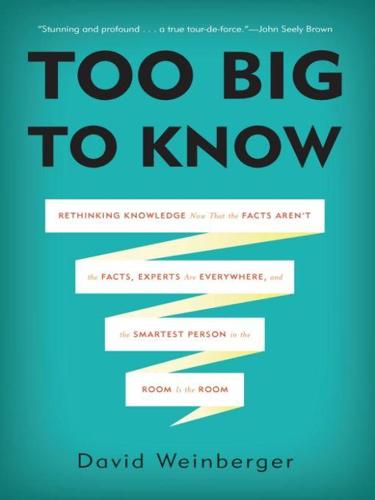
Too Big to Know: Rethinking Knowledge Now That the Facts Aren't the Facts, Experts Are Everywhere, and the Smartest Person in the Room Is the Room
by
David Weinberger
Published 14 Jul 2011
For example, an anti-draft crowd in New York City in 1863 turned into a mob when it threw stones, started fires, and looted. Before too long, it had lynched black men and torched the Colored Orphan Asylum on Fifth Avenue.10 So, it’s interesting that in the past few years we’ve grabbed onto the terms “crowd” and “mob” and applied them as positive characterizations of Internet sociality. Howard Rheingold’s Smart Mobs in 2003 applied the term to people connected through instantaneous digital communication,11 and James Surowiecki’s The Wisdom of Crowds12 in 2004 pointed to ways that unassociated groups of people can come up with more accurate answers than can individuals. Both books—each excellent—had titles that played upon our negative feelings about groups of people who are sharing space.
…
If someone becomes uncivil beyond the norms for the group, the moderator may step in. On occasion, people are banned from the discussion for a cooling-off period—the conversational equivalent of a time-out. If the conversation steers off course, the moderator may remind people what they are there to discuss. Howard Rheingold, one of the founding parents of online discussion and a denizen of The WELL since 1985, urges community forums to have moderators. Even the mere presence of moderators—even if they never moderate a single posting—is enough to keep out the trolls, he says.13 Moderation does not have to occur through designated moderators.
…
Given the complexity and magnitude of the Net, it is remarkably easy to learn how to operate it. But knowing how to click buttons is the least of our concerns. The second task—learning how to evaluate knowledge claims—is never-ending. Now that the temple priests don’t control what we encounter, we need those critical-thinking skills more than ever. The Internet pioneer Howard Rheingold talks about these as “literacies.” For example, we need to get better at distinguishing lying crap from well-documented conclusions, becoming more open to new ideas, and learning how to participate in a multi-way, multi-cultural discussion.18 The journalist Dan Gillmor has been writing about the skills citizens need to make sense of—and participate in—the new media ecology.19 Ethan Zuckerman has been thinking deeply about our tendency toward a smug homophily (our preference for others like us) and about structural ways we might get ourselves interested in something other than our own echoes.20 We are just at the beginning of figuring out what behaviors and attitudes lead to a smarter network.

They Have a Word for It A Lighthearted Lexicon of Untranslatable Words & Phrases-Sarabande Books (2000)
by
Howard Rheingold
Published 10 Mar 2020
A spirited r·cfcrcnn· book g uar«nteed to enrich your vocabulary, op e n )'Otrr eye, , a nd expa nd )0111· 1n i11d. T he writer's perfect tool. C"{J1,ry Have a W,ml Jori/ takes the reader to the far corners of the globe to discover words and phrases for which there arc no cquiva. . lcnts in English. From th e North Pole to New Guinea, from Ea5ter Island to libet, Howard Rheingold explores more than forty familiar and obscure languages to d iscover genuinely usefu l (rather than simply odd) words that can open up new ways of understanding and experiencing life. For example. th~ Japanese sec beauty in places we d o not, and describe their perceptions with great subtlety.
…
The Iroquois on.dimumk will bring you in.sight into your innermost desires; the Hawai ian ho'opo,iqpt,110 may teach you someth ing about resolving your family problems; and an Arabic word, istiqo,0,, will give you practical assistance in ,nalting your drea,ns ,ool'k. Sarahande ~ Books Re fe re nce/ Humor/ Language THEY HAVE A WORD FOR IT ~ ALSO BY HOWARD RHEINGOLD Talking Tech: A Conversational Guide to Science and Technology with Howard Levine, 1982 The New Technology Coluring Book with Rita Aero and Scott Bartlett Higher Creativity with Willis Harman, 1984 Tools for Thought, 1985 The Cognitive Connection: Thought and Language in Man and Machine with Howard Levine, 1986 They Have a Word for It: A Lighthearted Lexicon of Untranslatab/,e Words and Phrases, 1988 Excursions to the Far Side of the Mind, 1988 Expluring the World of Lucid Dreaming with Stephen LaBerge, 1991 Virtual R.eality, 1991 The Virtual Community: Homestanding at the E/,ectronic Frontier, 1993 The Mil/,ennium lVho/,e Earth Catalog, 1994 ___ave a for It A Lighthearted Lexicon of Untranslatable Words & Phrases HOWARD RHEING01D Sarabande [stl Books LOUISVILLE, KENTUCKY Copyright© 1988 by Howard Rheingold This edition 2000 All rights reserved Reprinted by arrangement with Jeremy Tarcher / Putnam, a member of Penguin/Putnam Inc.
…
Sarahande ~ Books Re fe re nce/ Humor/ Language THEY HAVE A WORD FOR IT ~ ALSO BY HOWARD RHEINGOLD Talking Tech: A Conversational Guide to Science and Technology with Howard Levine, 1982 The New Technology Coluring Book with Rita Aero and Scott Bartlett Higher Creativity with Willis Harman, 1984 Tools for Thought, 1985 The Cognitive Connection: Thought and Language in Man and Machine with Howard Levine, 1986 They Have a Word for It: A Lighthearted Lexicon of Untranslatab/,e Words and Phrases, 1988 Excursions to the Far Side of the Mind, 1988 Expluring the World of Lucid Dreaming with Stephen LaBerge, 1991 Virtual R.eality, 1991 The Virtual Community: Homestanding at the E/,ectronic Frontier, 1993 The Mil/,ennium lVho/,e Earth Catalog, 1994 ___ave a for It A Lighthearted Lexicon of Untranslatable Words & Phrases HOWARD RHEING01D Sarabande [stl Books LOUISVILLE, KENTUCKY Copyright© 1988 by Howard Rheingold This edition 2000 All rights reserved Reprinted by arrangement with Jeremy Tarcher / Putnam, a member of Penguin/Putnam Inc. No part of this book may be reproduced without written permission of the publisher. Please direct inquiries to: Managing Editor Sarabande Books, Inc. 2234 Dundee Road, Suite 200 Louisville, KY 40205 LIBRARY OF CONGRESS CATALOGING-IN-PUBLICATION DATA Rheingold, Howard.
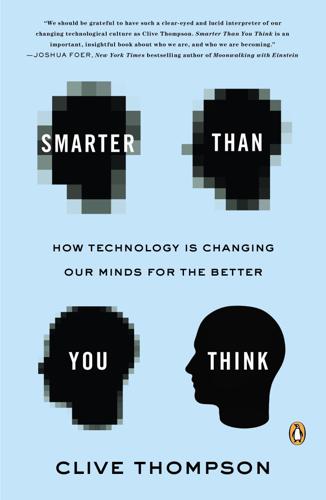
Smarter Than You Think: How Technology Is Changing Our Minds for the Better
by
Clive Thompson
Published 11 Sep 2013
But right now, these big effects dominate our current and near-term landscape. In one sense, these three shifts—infinite memory, dot connecting, explosive publishing—are screamingly obvious to anyone who’s ever used a computer. Yet they also somehow constantly surprise us by producing ever-new “tools for thought” (to use the writer Howard Rheingold’s lovely phrase) that upend our mental habits in ways we never expected and often don’t apprehend even as they take hold. Indeed, these phenomena have already woven themselves so deeply into the lives of people around the globe that it’s difficult to stand back and take account of how much things have changed and why.
…
But I see them start to get really paranoid. They keep on asking, ‘Wait, wait, is this a content farm?’ And this is what you want. Most people in their lives aren’t going to be writing term papers, but they’re going to be looking for information their whole lives.” Crap detection, to use Howard Rheingold’s phrase, isn’t easy. Among other things, it’s easier to do if you already know about the world. For instance, Harris found that students had difficulty distinguishing a left-wing parody of the World Trade Organization’s Web site from the real WTO site. Why? Because you need to understand why someone would want to parody the WTO in the first place—knowledge the average eighth grader does not yet possess.
…
I’m grateful to everyone who gave me a glimpse into their lives. Behind the scenes, there are also dozens more who offered ideas, conversation, and feedback that shaped my work. That includes Tricia Wang, An Xiao Mina, Debbie Chachra, Liz Lawley, Zeynep Tufekci, Clay Shirky, Brooke Gladstone, Tom Igoe, Max Whitney, Terri Senft, Misha Tepper, Fred Kaplan, Howard Rheingold, danah boyd, Liz Lawley, Nick Bilton, Gary Marcus, Heidi Siwak, Ann Blair, Eli Pariser, Ethan Zuckerman, Ian Bogost, Fred Benenson, Heather Gold, Douglas Rushkoff, Rebecca MacKinnon, Cory Menscher, Mark Belinsky, Quinn Norton, Anil Dash, Cathy Marshall, Elizabeth Stock, Philip Howard, Denise Hand, Robin Sloan, Tim Carmody, Don Tapscott, Steven Johnson, Kevin Kelly, Nina Khosla, Laura Fitton, Jillian York, Hilary Mason, Craig Mod, Bre Pettis, Glenn Kelman, Susan Cain, Noah Schachtman, Irin Carmon, Matthew Battles, Cathy Davidson, Linda Stone, Jess Kimball, Phil Libin, Kati London, Jim Marggraff, Dan Zalewski, Sasha Nemecek, Laura Miller, Brian McNely, Duncan Watts, Kenyatta Cheese, Nora Abousteit, Deanna Zandt, David Wallis, Nick Denton, Alissa Quart, Stan James, Andrew Hearst, Gary Stager, Evan Selinger, Steven Demmler, and Vint Cerf.
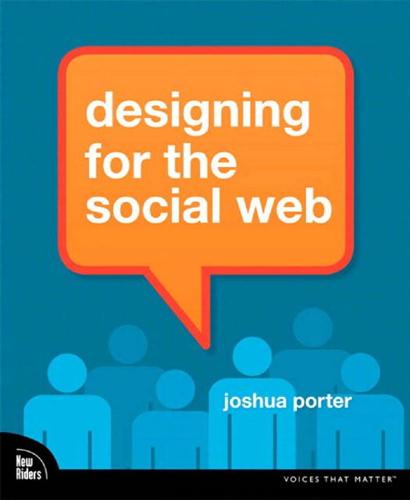
Designing for the Social Web
by
Joshua Porter
Published 18 May 2008
Seth Godin, who consistently publishes small blog posts that have a big impact, including this one (http://sethgodin.typepad.com/the_dip/2007/04/ not_settling.html), which was the final push I needed to pursue my passion and go out on my own. Clay Shirky, whose wonderful writing about the web got me blogging in the first place. Howard Rheingold, whom I rediscovered and found incredibly prescient on all social topics related to the web. Luke Wroblewski, who is a wonderful writer and teacher of design. Steve Krug, whose book Don’t Make Me Think set the bar for books in the web genre. iv Andrew Chak, whose under-appreciated book Submit Now: Designing Persuasive Web Sites was a big influence in my thinking about social design.
…
Designing an effective interface has always been tough, even when we were merely designing interfaces for one person to interact with content we controlled. But when we add the social aspect, things get even more difficult. Though we can see glimpses, we have little understanding of the overall effect of social software going forward. In 1985, Howard Rheingold, writing about the nascent personal computer revolution, foresaw social software’s massive challenge and potential for change: Nobody knows whether this will turn out to be the best or the worst thing the human race has done for itself, because the outcome of this empowerment will depend in large part on how we react to it and what we choose to do with it.
…
The human mind is not going to be replaced by a machine, at least not in the foreseeable future, but there is little doubt that the worldwide availability of fantasy amplifiers, intellectual toolkits, and interactive electronic communities will change the way people think, learn, and communicate.4 Just as humans are social, so our software must be as well. 4 Howard Rheingold’s books are wonderful: Tools for Thought (http://www.rheingold.com/texts/tft/) and Virtual Communities (http://www.rheingold.com/vc/book/). Though they were written in 1985 and 1993, respectively, they were at least a decade ahead of their time. Probably two. 9 10 DESIGNING FOR THE SOCIAL WEB Social Software is a Forced Move The person shopping at Amazon in the opening of this chapter was relying on social connections to help her make a shopping decision.

Here Comes Everybody: The Power of Organizing Without Organizations
by
Clay Shirky
Published 28 Feb 2008
In 1999 the Falun Gong, a Chinese religious organization, astonished and terrified the Chinese government by assembling ten thousand people in Zhongnanhai, a secure complex in Beijing where many of China’s leaders reside. The gathering was peaceful, but its execution stunned the Chinese government, as it had had no idea it was coming, having been organized by text messages via mobile phones. Howard Rheingold, in Smart Mobs, documented an event in the Philippines in which thousands of outraged citizens quickly coordinated a protest in Manila after President Joseph Estrada’s government voted to weaken his corruption trial. The rapid assembly of thousands of Filipinos in the streets, who had forwarded text messages advising people where to go and exhorting them to “Wear Blck,” convinced the government to let the trial go forward, thereby dooming Estrada.
…
., no budget from donations—but the unpredictability of that kind of effort makes it a signal of a kind of commitment that is hard for any ordinary membership organization to produce effectively. The story of the rapidly coordinated protest by ordinary citizens is one of the most durable stories we have about social media. Since Howard Rheingold’s descriptions of the political protest in the Philippines coordinated by text message, we’ve had countless examples, from the Belarusian flash mob kids to the Latino high school students in LA to the HSBC protesters in the UK. Despite the number of stories about collective action, though, they have one thing in common: they all rely on “stop energy,” on an attempt to get some other organization or group to capitulate to the demands of the collected group.
…
Small Groups as Complex Systems: Formation, Coordination, Development, and Adaptation, by Holly Arrow, Joseph E. McGrath, and Jennifer L. Berdahl, Sage (2000) provides a good review of work on small group dynamics, and Why Humans Cooperate: A Cultural and Evolutionary Explanation, by Natalie Henrich and Joseph Henrich, Oxford University Press (2007) provides a one for larger groups. Howard Rheingold, whose The Virtual Community: Homesteading on the Electronic Frontier, Basic Books (1993) was a critical early work on online community, is working on a multiyear study of cooperation in collaboration (www.cooperationcommons.com) with the Institute for the Future. Page 51: “The Tragedy of the Commons,” Science 162 (3859), December 13, 1968, pp. 682-83.
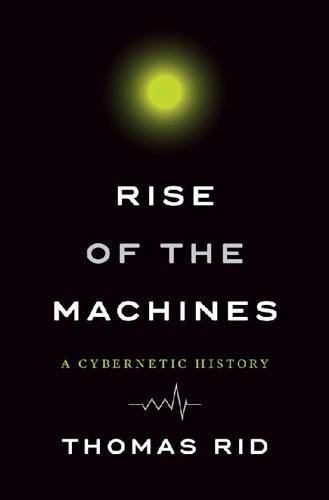
Rise of the Machines: A Cybernetic History
by
Thomas Rid
Published 27 Jun 2016
The stunned organizers received sixty abstracts from artists, technologists, computer scientists, entrepreneurs, architects, and sociologists, many of them WELL members, some from as far as Sweden and Italy. And the organizers were amazed again when these people actually arrived in Austin by plane, fresh out of cyberspace. Several of the fifty attendees would go on and shape the emerging debate, including the colorful author Howard Rheingold and science fiction legend Bruce Sterling, best known for Mirrorshades, an anthology that defined the cyberpunk genre. John Perry Barlow was one of the first to respond. He mailed in an abstract titled “Music in Cyberspace.” The cattle rancher and Grateful Dead lyricist pointed out that his band had long been trying to blur the line between audience and performer.
…
Henceforth, Barlow and Rheingold and others would talk about “cyberspace” in metaphoric terms, just as the scholars at the conference had done. The conference volume was one of MIT’s best sellers for several years. Tightly coupling man and machine, of course, retained a nearly irresistible appeal. The most bizarre articulation of cyberspace must be Howard Rheingold’s vision of teledildonics. After hearing Stenger’s wild presentation in Austin, Rheingold articulated his own vision of future sex in the summer of 1990 in Mondo 2000. The first fully functional teledildonics system, Rheingold clarified at the outset, would not be “a fucking machine.” Users did not want to have intercourse with a cold piece of technology; they wanted to make love to other people.
…
It linked psychedelic drugs, virtual reality, and the rise of computer networks, as this typical illustration shows. The group attending Michael Benedikt’s Cyberconf, May 1990. Of note in this photo are John Perry Barlow (tall in the first row); to Barlow’s left, Sandy Stone; to Barlow’s right, Howard Rheingold, and then gaming theorist Brenda Laurel, followed by Michael and Amelie Benedikt. Behind the Benedikts stands Nicole Stenger, and behind her are Habitat pioneers Chip Morningstar and Randy Farmer. French virtual-reality artist Nicole Stenger, in VPL gear. Stenger gaveone of the most widely read presentations at Cyberconf: “Mind Isa Leaking Rainbow.”
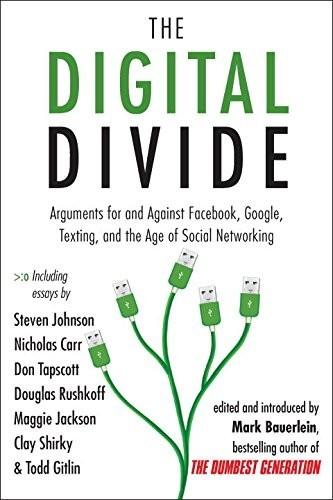
The Digital Divide: Arguments for and Against Facebook, Google, Texting, and the Age of Social Netwo Rking
by
Mark Bauerlein
Published 7 Sep 2011
(Anonymous) 4 spoonman, The WELL, conference on virtual communities (vc.20.65), June 11, 1992. 5 Kenneth Gergen, The Saturated Self: Dilemmas of Identity in Contemporary Life (Basic Books, 1991). 6 bluefire (Bob Jacobson), The WELL, conference on virtual reality (vr.85.146), August 15, 1993. 7 The WELL, conference on virtual reality (vr.85.148), August 17, 1993. 8 Art Kleiner, The WELL, conference on virtual reality (vr.47.41), October 2, 1990. 9 Gergen, The Saturated Self, p. 6. 10 Ibid., p. 17. 11 hlr (Howard Rheingold), The WELL, conference on virtual reality (vr.47.351), February 2, 1993. 12 McKenzie Wark, The WELL, conference on virtual reality (vr.47.361), February 3, 1993. 13 hlr (Howard Rheingold), The WELL, conference on virtual reality (vr.47.362), February 3, 1993. 14 James M. Glass, Shattered Selves: Multiple Personality in a Postmodern World (Cornell University Press, 1993). 15 Robert Jay Lifton, The Protean Self: Human Resilience in an Age of Fragmentation (Basic Books, 1993), p. 192. 16 Ibid., pp. 229–32. 17 See, for example, “Aion: Phenomenology of the Self,” in The Portable Jung, ed.
…
The mass embrace of hypertext is like the Seinfeld “Betrayal” episode: a cultural form that was once exclusively limited to avant-garde sensibilities, now happily enjoyed by grandmothers and third graders worldwide. I won’t dwell on this point, because the premise that increased interactivity is good for the brain is not a new one. (A number of insightful critics—Kevin Kelly, Douglas Rushkoff, Janet Murray, Howard Rheingold, Henry Jenkins—have made variations on this argument over the past decade or so.) But let me say this much: The rise of the Internet has challenged our minds in three fundamental and related ways: by virtue of being participatory, by forcing users to learn new interfaces, and by creating new channels for social interaction.
…
Crumb about “Which is the real R. Crumb?” He goes through four pages of incarnations, from successful businessman to street beggar, from media celebrity to gut-gnawing recluse, etc., etc. Then at the end he says: “Which is the real one?” . . . “It all depends on what mood I’m in!” We’re all like that online. 8 Howard Rheingold, the member of the WELL who began the discussion topic, also referred to Gergen’s notion of a “saturated self,” the idea that communication technologies have caused us to “colonize each other’s brains.” Gergen describes us as saturated with the many “voices of humankind—both harmonious and alien.”
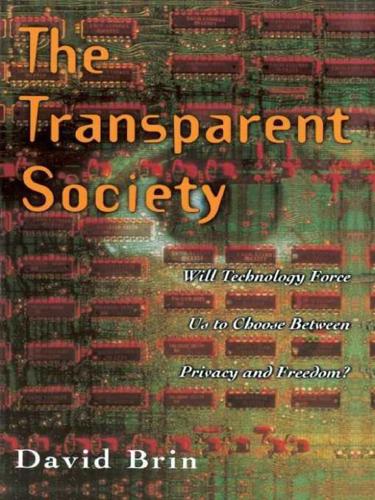
The Transparent Society: Will Technology Force Us to Choose Between Privacy and Freedom?
by
David Brin
Published 1 Jan 1998
Barlow later recanted, calling it simply the most important discovery since fire. Nor was he the sole prophet acclaiming an egalitarian realm of unlimited opportunity for all, just around the corner. As the number of users grows geometrically, some anticipate that by 2008 the Net might encompass the entire world population. In his 1993 book Virtual Reality, Howard Rheingold called for redefining the word community, since in the near future each sovereign individual may be able to sift among six or more billion souls, sorting by talent or avocation to find those compatible for consorting with at long range, via multimedia telepresence, in voluntary associations of shared interest.
…
Would another culture put up with the likes of Stewart Brand, always poking at stagnant structures, from state government to the stuffy profession of architecture? Would Steve Jobs or Andrew Grove be billionaires in an economy based on inherited advantage? Where else might happy magicians like Howard Rheingold and Kevin Kelly be more influential than establishment priests or scientists? Would important power brokers hang on the words of Esther Dyson, Sherry Turkle, and Dorothy Denning if this culture did not value original minds? Listening to such remarkable individuals, one can tell they know how lucky they are.
…
It is very doubtful in the short term that citizens will accept being hounded for pennies each time they photocopy a clipping, browse a Web page, or crib a brief quote from Kurt Vonnegut, Jr., to use in a speech before the local rotary club. What might happen if the conduit companies and content owners ever get together? Stranger things have happened. Howard Rheingold, author of The Virtual Community , worries about this possibility when the Internet is commercialized. “If the company that carries the communication also creates the content, are they going to discriminate against competing content?” Rheingold believes they will if they are allowed to. It could be the worst possible combination of both worlds.
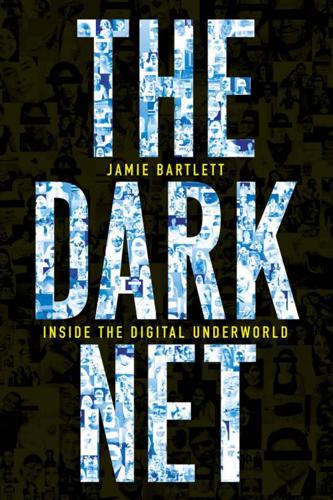
The Dark Net
by
Jamie Bartlett
Published 20 Aug 2014
p.186 ‘In another American high school . . .’ ‘3 Juveniles Accused of Sexually Exploiting Female Classmates’, http://www.newschannel5.com/story/21890716/3-juveniles-accused-of-sexually-exploiting-female-classmates. p.187 ‘In his famous 1990 article . . .’ Howard Rheingold, ‘Teledildonics: Reach out and Touch Someone’; http://janefader.com/teledildonics-by-howard-rheingold-mondo-2000-1990/. p.189 ‘“We’re not a community” . . .’ http://twitlonger.com/show/n_1s0rnva, by @thecultofleo. Chapter 7 The Werther Effect p.192 ‘Eighteen per cent of US . . .’ http://www.pewinternet.org/2011/02/28/peer-to-peer-health-care-2/.
…
For all the social panic about the ubiquity of hard-core porn on the net, there is something quite comforting about this. The net has always been accompanied by utopian dreams of sex without limits, of fantasies without boundaries. In his famous 1990 article about the future of sex in the magazine Mondo 2000, Howard Rheingold argued that ‘the definition of Eros’ would ‘soon be up for grabs’, because everyone will be as beautiful as they want and will be able to have virtual sex with anyone, anywhere. But most people don’t want fantastical sex with robots or supermodels. They want ordinary sex with real people. Yet something about the phrase ‘real girlfriend experience’ bothers me.

Exploring the World of Lucid Dreaming
by
Stephen Laberge, Phd
and
Howard Rheingold
Published 8 Feb 2015
Exploring the World of Lucid Dreaming Stephen LaBerge, Ph.D. & Howard Rheingold BALLANTINE BOOKS • NEW YORK LaBerge & H. Rheingold, (1990). Exploring the World of Lucid Dreaming. New York: Ballantine. ISBN 0-345-37410-X Contents The World of Lucid Dreaming p. 1 Preparation for Learning Lucid Dreaming p. 10 Waking Up in the Dream World p. 36 Falling Asleep Consciously p. 60 The Building of Dreams p. 74 Principles and Practice of Lucid Dreaming p. 86 Adventures and Explorations p. 103 Rehearsal for Living p. 114 Creative Problem Solving p. 125 Overcoming Nightmares p. 136 The Healing Dream p. 156 Life Is a Dream: Intimations of a Wider World p. 171 Afterword p. 186 Appendix p. 188 Notes p. 193 Exercises The World of Lucid Dreaming Your present state of consciousness p. 7 Preparation for Learning Lucid Dreaming Cataloging your dreamsigns p. 29 Goal setting for success p. 30 Scheduling time for lucid dreaming p. 32 Progressive relaxation p. 33 Sixty-one-point relaxation p. 34 Waking Up in the Dream World Critical state-testing technique p. 39 Power of resolution technique p. 41 Intention technique p. 43 Reflection-intention technique p. 44 Prospective memory training p. 47 MILD technique p. 49 Autosuggestion technique p. 51 Falling Asleep Consciously Hypnagogic imagery technique p. 62 Relaxed (“pot-shaped”) breathing p. 64 Power of visualization: White dot technique p. 65 Power of visualization: Black dot technique p. 65 Dream lotus and flame technique p. 66 Count yourself to sleep technique p. 67 The twin bodies technique p. 69 The one body technique p. 71 The no body technique p. 73 The Building of Dreams How schemas take us beyond the information given p. 77 Principles and Practice of Lucid Dreaming The spinning technique p. 88 The dream television p. 96 Lucid dream incubation p. 99 Spinning a new dream scene p. 101 Strike the set, change the channel p. 101 Adventures and Explorations How to script your own adventure p. 111 You are the hero p. 113 Rehearsal for Living Lucid dream workout p. 118 Playing to the dream audience p. 121 Creative Problem Solving Lucid dream problem solving p. 133 Building a lucid dream workshop p. 135 Overcoming Nightmares Conversing with dream characters p. 147 Redreaming recurrent nightmares p. 153 The Healing Dream Seeking opportunities for integration p. 162 Life Is a Dream: Intimations of a Wider World Seeking the “Highest” p. 182 Appendix: Supplementary Exercises Understanding the value of the will p. 188 Strengthening your will p. 189 Candle concentration p. 191 Visualization training p. 191 Acknowledgments We cannot say how much we owe to our predecessors; without the efforts of countless others, this work could not have been accomplished.
…
In Lucid Dreaming, I collected the available knowledge on the subject from both ancient and modern sources. Since that book’s publication, some ten thousand people have written to me describing their experiences and discoveries, and requesting more practical information about lucid dreaming. In response to those requests, I decided to collaborate on a new book with Howard Rheingold. Howard has written extensively on topics such as creativity, consciousness, and dreamwork. Exploring the World of Lucid Dreaming is a self-teaching curriculum, a step-by- step method for learning to have and use lucid dreams. You can learn at your own pace, and to your own depth, how to explore your lucid dreams and use them to enrich your life.
…
In 1988, acting on his conviction that lucid dreaming offers many benefits to humanity, Dr. LaBerge founded the Lucidity Institute, a business whose mission is to advance research on the nature and potentials of consciousness and to apply the results of this research to the enhancement of human health and well-being. Howard Rheingold is the author of Excursions to the Far Side of the Mind and the coauthor of Higher Creativity and The Cognitive Connection. He currently resides in California.
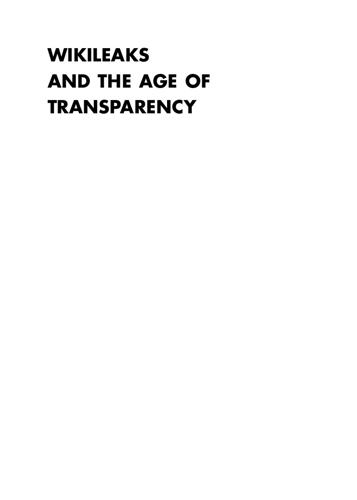
WikiLeaks and the Age of Transparency
by
Micah L. Sifry
Published 19 Feb 2011
All that mattered was whether what I had to say had any credibility. I was now a full-fledged member of the group that NYU scholar Jay Rosen has dubbed “the people formerly known as the audience.”4 Being connected in real-time also meant that we, the ex-audience, had a new ability to talk back to the powers that be, or as digital visionary Howard Rheingold likes to say, to be “crap-detectors” and “call bullshit” when we see it.5 Nothing illustrates that better than a moment at the first Personal Democracy Forum in May 2004. Having caught the real-time interactivity bug from ETech, Andrew and I installed a similar online back channel at PdF. With the help of our friends David Isenberg and Greg Elin, we got the auditorium at the New School for Social Research wired for WiFi and set up a simple chat tool with a big screen on stage behind our panelists.
…
Sifry, “The Rise of Open Source Politics,” The Nation, November 22, 2004, www.thenation.com/article/rise-open-source-politics. 2 Interview with the author, June 2004. 3 See Fred Turner, From Counterculture to Cyberculture: Stewart Brand, the Whole Earth Network and the Rise of Digital Utopianism (University of Chicago Press, 2006). 4 Jay Rosen, “The People Formerly Known as the Audience,” PressThink. org, June 27, 2006, http://archive.pressthink.org/2006/06/27/ppl_frmr. html. 5 Howard Rheingold, “Crap Detection 101,” SFGate.com, June 30, 2009, www.sfgate.com/cgi-bin/blogs/rheingold/detail?entry_id=42805. 6 Micah L. Sifry, “The Deaning of America,” The Nation, March 25, 2004, www.thenation.com/article/deaning-america. 7 See Yochai Benkler, The Wealth of Networks, (New Haven: Yale University Press, 2006), Chapter Seven: “Political Freedom, Part Two: The Emergence of the Networked Public Sphere,” for a detailed exploration of the Diebold case.
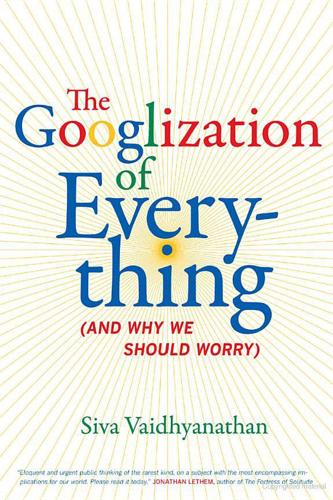
The Googlization of Everything:
by
Siva Vaidhyanathan
Published 1 Jan 2010
Some media theorists like Mark Poster and Jodi Dean are critical of efforts to associate a print-centered nostalgic phenomenon with the cacophony of cultural NOTES TO PAGES 137– 41 245 and political activities in global cyberspace. Others, like Yochai Benkler and Howard Rheingold, see the practice of “peer production” and the emergence of impressive and efficient organizational practices as a sign that Habermas’s dream could come true in the form of digital signals and democratic culture. See Mark Poster, “The Net as a Public Sphere?” Wired, November 1995; Howard Rheingold, The Virtual Community: Homesteading on the Electronic Frontier (Cambridge, MA: MIT Press, 2000); Howard Rheingold, Smart Mobs: The Next Social Revolution (Cambridge, MA: Perseus Publishing, 2002); Craig J.
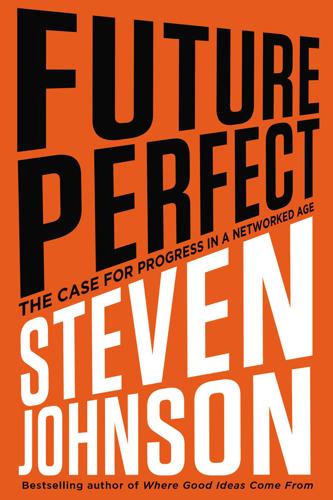
Future Perfect: The Case for Progress in a Networked Age
by
Steven Johnson
Published 14 Jul 2012
My thinking on these issues has been greatly expanded—if not downright borrowed—from conversations with Beth Noveck, Yochai Benkler, Fred Wilson, Brad Burnham, Larry Lessig, Denise Caruso, John Mackey, John Geraci, Paul Miller, Roo Rogers, Rachel Botsman, Reid Hoffman, Perry Chen, Yancey Strickler, Clay Shirky, Stewart Brand, Howard Rheingold, Kevin Kelly, Jon Schnur, Raj Sisodia, Gordon Wheeler, Nick Grossman, Jay Haynes, Eric Liftin, John Battelle, and my mother, Bev Johnson. Special thanks to the group who were generous enough to comment on the manuscript in draft: Bill Wasik, David Sloan Wilson, Dan Hill, Henry Farrell, and my father and longtime political sparring partner, Stan Johnson.
…
The key books and essays that have shaped my thinking on the power of peer networks and the framework of peer-progressive values include Yochai Benkler’s The Wealth of Networks; Beth Noveck’s WikiGovernment; Carne Ross’s The Leaderless Revolution: How Ordinary People Will Take Power and Change Politics in the 21st Century; Howard Rheingold’s Smart Mobs; Clay Shirky’s Here Comes Everybody: The Power of Organizing Without Organizations; Ori Brafman and Rod Beckstrom’s The Starfish and the Spider: The Unstoppable Power of Leaderless Organizations; Tim O’Reilly’s “The Architecture of Participation”; Henry Farrell and Cosma Shalizi’s “Cognitive Democracy”; and just about everything written by Manuel Castells, starting with The Rise of the Network Society.
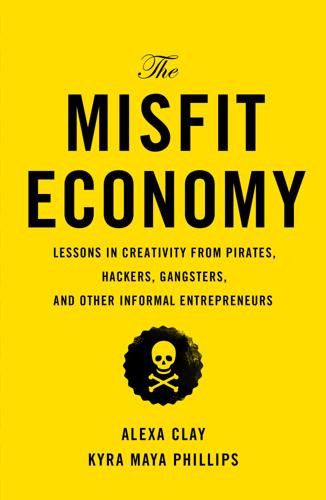
The Misfit Economy: Lessons in Creativity From Pirates, Hackers, Gangsters and Other Informal Entrepreneurs
by
Alexa Clay
and
Kyra Maya Phillips
Published 23 Jun 2015
When I say ‘I’m gay,’ nobody is like ‘Oh, have you considered being straight?’ But they do say ‘Oh, what if you had stayed in school?’ ” The unschooling movement may be a niche, but alternative education is a growing marketplace. “Our education system was used to make industrial workers out of agricultural workers. It is no longer adequate,” Howard Rheingold told us. Rheingold, sixty-seven, is the former editor of Whole Earth Review. Founded in 1985, Whole Earth Review was a countercultural publication evolving out of Stewart Brand’s Whole Earth Catalog and rooted in “that old American tradition of self-reliance,” Rheingold shared, “building on that misfit streak started by Emerson.”
…
Rheingold is working to develop models of peer education in which students are no longer passive consumers of content but are able to co-learn with each other. It is provoking a similar ideal to Whole Earth, with the message “Take charge of your life; don’t depend on formal (educational) institutions, but do it yourself.” Howard Rheingold, Kio Stark, and Dale Stephens belong to a tribe of misfits who are provoking the education conversation: questioning dogmas and assumptions about how we learn and how we teach, and pioneering different approaches to education. As Rheingold told us, “We are in an era of extremely rapid change.
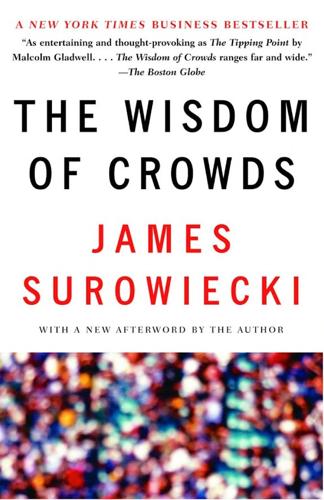
The Wisdom of Crowds
by
James Surowiecki
Published 1 Jan 2004
As Schelling wrote, “People can often concert their intentions and expectations with others if each knows that the other is trying to do the same.” This is a good thing because conversation isn’t always possible, and with large groups of people in particular it can be difficult or inefficient. (Howard Rheingold’s book Smart Mobs, though, makes a convincing case that new mobile technologies—from cell phones to mobile computing—make it much easier for large collections of people to communicate with each other and so coordinate their activities.) Second, the existence of Schelling points suggests that people’s experiences of the world are often surprisingly similar, which makes successful coordination easier.
…
Arrow, The Limits of Organization (New York: Norton, 1974); and Thomas C. Schelling, Micromotives and Macrobehavior (New York: Norton, 1978). More recent, sophisticated takes on self-organization and the emergence of bottom-up order are Steven Johnson, Emergence (New York, Scribner, 2001); and Howard Rheingold, Smart Mobs (Boston: Perseus, 2002). The account of John Craven’s success is taken from Sherry Sontag and Christopher Drew, Blind Man’s Bluff (New York: Public Affairs, 1998): 146–50. Drew and Sontag also detail Craven’s success in using the same search method to find an H-bomb that had been lost in the ocean off Spain (58–60).
…
Ann M. Bell and William A. Sethares, “Avoiding Global Congestion Using Decentralized Adaptive Agents,” IEEE Transactions on Signal Processing 49 (2001): 2873–79. The Grand Central experiment is in Thomas C. Schelling, The Strategy of Conflict (Cambridge: Harvard University Press, 1960): 54–67. Howard Rheingold, Smart Mobs (Boston: Perseus Books, 2002). As the similarity in the titles suggests, there are obvious resonances between Rheingold’s book and this one—particularly in the possibilities for groups to cooperate and coordinate without top-down leadership. But the central concerns of the books are quite different.

The Wealth of Networks: How Social Production Transforms Markets and Freedom
by
Yochai Benkler
Published 14 May 2006
What these suggest to us is a transition, as the capabilities of both systems converge, to widespread availability of the ability to register and communicate observations in text, audio, and video, wherever we are and whenever we wish. Drazen Pantic tells of how listeners of Internet-based Radio B-92 in Belgrade reported events in their neighborhoods after the broadcast station had been shut down by the Milosevic regime. Howard Rheingold describes in Smart Mobs how citizens of the Philippines used SMS to organize real-time movements and action to overthrow their government. In a complex modern society, where things that matter can happen anywhere and at any time, the capacities of people armed with the means of recording, rendering, and communicating their observations change their relationship to the events that surround them.
…
There may be some coordination and condensation points--like BoycottSBG.com or blackboxvoting.org. Like other integration platforms in peer-production systems, these condensation points provide a critical function. They do not, however, control the process. One manifestation of distributed coordination for political action is something Howard Rheingold has called "smart mobs"--large collections of individuals who are able to coordinate real-world action through widely distributed information and communications technology. He tells of the "People Power II" revolution in Manila in 2001, where demonstrations to oust then president Estrada were coordinated spontaneously through extensive text messaging. 93 Few images in the early twentyfirst century can convey this phenomenon more vividly than the demonstrations around the world on February 15, 2003.
…
Poster presented at the International Communication Association meetings, New York. 92. Harvard Kennedy School of Government, Case Program: " `Big Media' Meets `Bloggers': Coverage of Trent Lott's Remarks at Strom Thurmond's Birthday Party," http:// www.ksg.harvard.edu/presspol/Research_Publications/Case_Studies/1731_0.pdf. 93. Howard Rheingold, Smart Mobs, The Next Social Revolution (Cambridge, MA: Perseus Publishing, 2002). 94. Data taken from CIA World Fact Book (Washington, DC: Central Intelligence Agency, 2004). 95. Lawrence Solum and Minn Chung, "The Layers Principle: Internet Architecture and the Law" (working paper no. 55, University of San Diego School of Law, Public Law and Legal Theory, June 2003). 96.

Designing Social Interfaces
by
Christian Crumlish
and
Erin Malone
Published 30 Sep 2009
To Robyn Tippins, YDN community manager and skilled blogger, for her insights on the community-building trifecta. Without the work of the numerous thinkers, designers, builders, and schemers who have been mapping the digital social product space for the past decade or more (cited for further reading throughout the book)—notably, Ward Cunningham, Howard Rheingold, Amy Jo Kim, Dave Winer, Marc Canter, David Weinberger, Gene Smith, Clay Shirky, Mary Hodder, Stewart Butterfield, Edward Vielmetti, Kevin Marks, Tom Coates, Jeremy Keith, Allen Tom, Brian Oberkirch, Liz Lawley, Lane Becker, Susan Mernit, Tara Hunt and many, many others—we could not have written this book.
…
., 2005 Groundswell, by Charlene Li and Josh Bernoff, Harvard Business School Press, 2008 A Pattern Language: Towns, Buildings, Construction (Center for Environmental Structure Series), by Christopher Alexander, Oxford University Press, 1977 Social Media in Plain English, http://www.youtube.com/watch?v=MpIOClX1jPE A Timeless Way of Building, by Christopher Alexander, Oxford University Press, 1979 The Virtual Community: Homesteading on the Electronic Frontier, by Howard Rheingold, The MIT Press, 2000 The Well: A Story of Love, Death and Real Life in the Seminal Online Community, by Katie Hafner, Carroll, Graf Publishers, 2001 Download at WoweBook.Com Chapter 2 Social to the Core The Web is more a social creation than a technical one. I designed it for a social effect—to help people work together—and not as a technical toy.
…
Download at WoweBook.Com Further Reading 397 Further Reading “Community Lessons from Flickr’s Heather Champ,” from Brian Oberkirch’s Only Connect blog, http://www.brianoberkirch.com/2008/03/07/ community-lessons-from-flickrs-heather-champ/ Derek Powazek’s posts on community, http://powazek.com/posts/category/community “The Virtual Community,” by Howard Rheingold, http://www.well.com/~hlr/vcbook/ Download at WoweBook.Com Download at WoweBook.Com Chapter 16 Where in the World? It’s a beautiful day in this neighborhood. A beautiful day for a neighbor. Would you be mine? Could you be mine? —Mr. Rogers’ Neighborhood TUBBS: I haven’t seen you before.
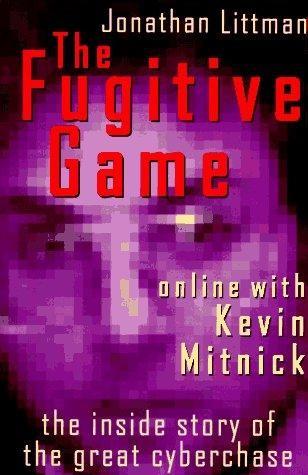
The Fugitive Game: Online With Kevin Mitnick
by
Jonathan Littman
Published 1 Jan 1996
The Well has promised its subscribers it would not turn over personal e-mail, but the FBI doesn't appear to care about the Well's commitment to protect subscribers' privacy. At 4:19 p.m. one of the Well's most prestigious subscribers, former board member Howard Rheingold, a celebrated author and columnist, uploads his current syndicated newspaper column to the thread, and asks whether the zealous manhunt threatens basic constitutional protections. #452 CIVIL LIBERTIES, VIRTUAL COMMUNITIES, AND HACKERS By Howard Rheingold The recent arrest of alleged super-hacker Kevin Mitnick has focused the attention of the public on the dangers of putting sensitive information online: communication networks, by their nature, will always be technically insecure....
…
The following publications, organizations, articles, transcripts, documents and book provided source material: Lewis De Payne tape recording of his conversation with Mitnick; All Things Considered radio broadcast; CBS Evening News; the New York Times; LeVord Burns's FBI affidavit; the FBI; radio transcript of Shimomura press conference; The Hacker Crackdown, by Bruce Sterling; federal statutes; The Nation, "Cyberscoop"; Wired; Communications Daily, "Immunity Needed, Markey Panel Sees Dark Side of Electronic Frontier"; "Civil Liberties, Virtual Communities, and Hackers," by Howard Rheingold; the Washington Post; the Hollywood Reporter; the Daily Variety; USA Today; the San Jose Mercury; Associated Press. Fair use or permitted quotations were made of public posts by: Patrizia DiLucchio, Larry Person, Bruce Katz, Mark Graham, HuaPei Chen, Claudia Stroud, Emmanuel Goldstein, Douglas Fine, Netta Gilboa, Mike Jennings, Devoto, Charles Piatt, Aaron Barnhart, Bruce Koball, David Lewis, Chip Bayers, Chris Goggans.
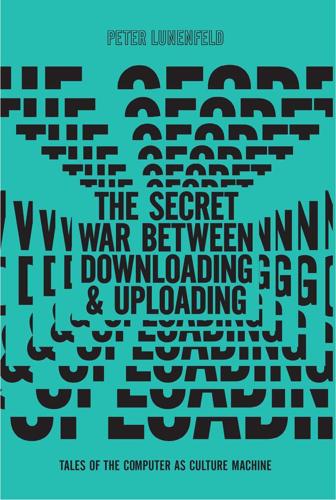
The Secret War Between Downloading and Uploading: Tales of the Computer as Culture Machine
by
Peter Lunenfeld
Published 31 Mar 2011
These are the stories that have sustained the bulk of people’s interests in the history of computing. This is the history of computing as plutography, stories about money. There is another small but growing strain that locates the transformations of our world in the work of computing’s visionaries. As far back as Howard Rheingold’s Tools for Thought written in the mid-1980s, there has been an alternative narrative featuring people like the irrepressible hypertext impresario Ted Nelson and even drug guru turned cyberpundit Timothy Leary—an intellectual’s history of computing.2 For the scholars studying hypertext poetry, the students in new media departments, and those with a cultural interest in computing, these are stories of secular saints, a hagiography of sorts.
…
I hope my classicist friends will forgive me if I abbreviate mimeme to meme. If it is any consolation, it could alternatively be thought of as being related to ‘memory,’ or to the French word même. It should be pronounced to rhyme with ‘cream.’” Richard Dawkins, The Selfish Gene (1976; repr., Oxford: Oxford University Press, 2006), 192. 2. Howard Rheingold, Tools for Thought: The History and Future of Mind-Expanding Technology (1985; repr., Cambridge, MA: MIT Press, 2000); available at <http://www.rheingold.com/texts/tft/>. 3. See Vannevar Bush, Science: The Endless Frontier (Washington, DC: U.S. Government Printing Office, 1945). 4. For an analysis of this transformation, see Paul N.

Insanely Great: The Life and Times of Macintosh, the Computer That Changed Everything
by
Steven Levy
Published 2 Feb 1994
Meeting me in the reception area was a trim, avuncular man with gray hair and a welltrimmed beard. He was in shirtsleeves. His greeting was warm yet understated. Douglas C. Engelbart led me to his office, a cubicle in one corner of a sprawling room filled with file cabinets and similar warrens. The Moses of computers did not even rate an enclosed office. I later read in Howard Rheingold's book Tools for Thought what a friend had written of Engelbart: "When he smiles, his face is wistful and boyish, but once the energy of his forward motion is halted and he stops to ponder, his pale blue eyes seem to express sadness and loneliness. " Indeed, there was something sad about our visit.
…
To be sure, what was most impressive about that first exposure was the simple fact that more than one file could be displayed simultaneously-quite an advance from the one-at-a-time regimen most of us were used to, pre Macintosh. Windows are really quite profound. Using them implicitly reshapes our relationship to information itself. Information is what we see when we look through those windows-a digital peep show where we flick open the shutters to information. As Howard Rheingold would note, "The territory you see through the augmented window in your new vehicle is not the normal landscape of plains and trees and oceans, but an informationscape in which the features are words, numbers, graphs, images, concepts, paragraphs, arguments, relationships, formulas, diagrams, proofs, bodies of literature and schools of criticism."

Raw Data Is an Oxymoron
by
Lisa Gitelman
Published 25 Jan 2013
When considered in these terms, it is difficult to dismiss escape, whether in the form of 129 130 Rita Raley disappearance or disconnectivity, as merely a counterfantasy.39 Critical Art Ensemble’s injunction is to the point: “Avoid using any technology that records data facts unless it is essential.”40 Howard Rheingold and Eric Kluitenberg make a comparable case for “selective connectivity”: techniques by which we can “choose to extract ourselves from the electronic control grid from time to time and place to place.”41 Similarly, for MayerSchönberger, the solution lies in the adoption of a certain care in the management of one’s online interactions, practices of selective disclosure and revelation in order to limit “uncontrollable information flows through individual choice.”42 If we are able to opt out of a single company’s personalized retargeting scheme, that is, should we not also be able to opt out of all advertising databases or indeed out of the whole system of “cybernetic capitalism” itself?
…
John Poindexter’s plans for the Total Information Awareness Program (TIA) drew on Gelernter’s paradigm, endeavoring to use the principle of topsight to establish a terror network that could ostensibly be seen and disciplined, though not eliminated because of its regenerative ends. 37. Ibid., 112. 38. Thomas Pynchon, Gravity’s Rainbow (New York: Penguin Books, [1973] 1995), 703. 39. See Irving Goh, “Prolegomenon to a Right to Disappear,” Cultural Politics 2, no. 1 (March 2006): 97–114. 40. Critical Art Ensemble, Electronic Disturbance, 135. 41. Howard Rheingold and Eric Kluitenberg, “Mindful Disconnection: Counterpowering the Panopticon from the Inside,” OPEN 11 Hybrid Space (Amsterdam: NAi Publishers, 2007), 32. 42. Mayer-Schönberger, Delete, 129. 43. Critical Art Ensemble, Electronic Disturbance, 132. 44. Rubinstein, Lee, and Schwartz, “Data Mining and Internet Profiling,” 277.

Death Glitch: How Techno-Solutionism Fails Us in This Life and Beyond
by
Tamara Kneese
Published 14 Aug 2023
This work is often done alongside changing bandages or colostomy bags, cooking or doing dishes, caring for children or other household members, and providing emotional support. Illness on the Early Web Death helps surface the inner workings of and tensions in a community, and electronic communities are no different from others in that respect. Early online forums addressed illness and death, preempting the popularity of illness blogging in the social media age. Howard Rheingold, a writer, technologist, and former Whole Earth Review editor, describes the importance of the WELL to networked and social computing in his classic book The Virtual Community (1993).20 As an avid early WELL participant, he remarks how information about illnesses spread in the electronic community many years before WebMD afforded patients the ability to self-diagnose and before thousands of forums appeared covering every imaginable ailment.21 Rheingold recounts how he used the forum to gather information about his young daughter’s tick bite, highlighting the “inner sense of security that comes with discovering that real people—most of them parents, some of them nurses, doctors, and midwives—are available, around the clock, if you need them.
…
The Local Bug Report, and Hafner’s account of Mandel and Syndicus’s “love story,” focused on Mandel’s experiences with cancer. But Syndicus had troubles of her own, which were overshadowed by the narratives around Mandel’s public death on the WELL. In the summer of 1989, she was diagnosed with breast cancer. She underwent a mastectomy, followed by radiation and chemotherapy. Howard Rheingold and other WELL members took Syndicus to the hospital and supported her while she was on sick leave from work. Conversely, Mandel, unable to cope, severed their relationship. While Syndicus was going through her chemotherapy treatments, he sent her vicious emails and harassed her on the WELL; Mandel extinguished all of her sessions as soon as she logged on, making it impossible for her to participate in her community.

Whole Earth: The Many Lives of Stewart Brand
by
John Markoff
Published 22 Mar 2022
(Concepts such as FAQ, flame, sock puppet, and spam all emerged from Usenet.)[21] Indeed, the culture that blossomed on the WELL was something of a throwback. Despite its state-of-the-art minicomputer, so-called WELL beings seemed to believe that the medium was as much a step backward toward the nineteenth-century literary salon as a step forward into the future. ‘‘People used to write letters all the time,’’ Howard Rheingold, a Whole Earth Review editor and a key member of the WELL community, told the New York Times. ‘‘Now we do again. It’s not for everybody. It’s for people who enjoy communicating through the written word.’’[22] Moreover, the community that sustained the WELL was not entirely online; rather, it became a creative hybrid, with lots of face-to-face socializing in which Brand frequently participated.
…
For the next three days, the WELL community went back and forth about Brand, whether he was to blame and what should be done. The tone of the conversation ran toward what the virtual world called cyberspace had become: sharp-edged, often strident statements full of certitude. Even empathy when it was in evidence felt hollow. A variety of people, including Howard Rheingold and Kelly, who posted a long description of how he would like to invent “WELL 2.0,” came to Brand’s defense, but the spirit of the conversation was exemplified by a user who went by the pseud Axon: Well, heaven forfend that i should bully saint stewart. i’m afraid that this latest exercise in obfuscation fails to sustain my interest. it’s just a lot of handwaving. now that i’ve been branded a Torturer i suppose i can die happy. my only intent is to help.
…
BACK TO NOTE REFERENCE 30 Chapter 9: Learning “Oil: The 30-Year Anniversary of the 1986 Collapse,” Oil & Gas 360, January 29, 2016, https://www.oilandgas360.com/oil-the-30-year-anniversary-of-the-1986-collapse/ BACK TO NOTE REFERENCE 1 Peter Schwartz and Peter Leyden, “The Long Boom: A History of the Future, 1980–2020,” Wired, July 1997. BACK TO NOTE REFERENCE 2 Howard Rheingold, “An Exercise in Perspective,” Deeper News, September 22, 1989. BACK TO NOTE REFERENCE 3 Rheingold, “An Exercise in Perspective.” BACK TO NOTE REFERENCE 4 Stewart Brand with John Aiello, “The Rescue That Failed—Disorganization, Empty Hydrants Killed Janet Ray,” pt. 1 of series of 3, San Francisco Chronicle, April 16, 1990, 32.

Twitter and Tear Gas: The Power and Fragility of Networked Protest
by
Zeynep Tufekci
Published 14 May 2017
These people who were not physically present could not perform every job and solve every problem, but they could certainly take care of many backchannel or behind-the-scenes duties—tasks requiring only connectivity rather than physical proximity, or perhaps donating a little bit of money. It added up quickly when the reach was so big. The @TahrirSupplies story is an example of the arrival of the “smart mobs” heralded by technology writer Howard Rheingold in 2003: groups of people congregating quickly to undertake a single action.13 However, it would be a mistake to see this tale as just one of a technical solution to organizational challenges. In much popular writing about social movements, the how of organizing is mentioned only as an afterthought.
…
Lance Bennett and Alexandra Segerberg, “The Logic of Connective Action,” Information, Communication and Society 15, no. 5 (2012): 739–68. 4. “Egypt: The Legacy of Mohammed Mahmoud Street,” BBC News, November 19, 2012, http://www.bbc.com/news/world-middle-east-20395260; also conceptually reintroduced in the context of social movements and digital technology by scholars of the early internet, including in the book Smart Mobs by Howard Rheingold. 5. Abulkasim al-Jaberi, “Out of Sight, but Not out of Mind: Mohamed Mahmoud Remembered,” Egypt Independent, November 19, 2012, http://www.egyptindependent.com/news/out-sight-not-out-mind-mohamed-mahmoud-remembered. 6. Reem Abdellatif, “Back in Tahrir, Business Booms,” Daily News Egypt, November 25, 2011, http://www.dailynewsegypt.com/2011/11/25/back-in-tahrir-business-booms/. 7.
…
Moment of Silence for All the Dead,” @TahrirSupplies (microblog), November 21, 2011, https://twitter.com/TahrirSupplies/status/138624142659420160. 10. al-Jaberi, “Out of Sight, but Not out of Mind.” 11. Ibid. 12. Farah El-Akkad, “The Square Effect,” Al-Ahram Weekly, June 6, 2013, http://weekly.ahram.org.eg/News/1118/30/The-square-effect.aspx. 13. Howard Rheingold, Smart Mobs: The Next Social Revolution (Cambridge, Mass.: Perseus, 2003). 14. I explore signaling of capacity to power in greater depth in chapter 8. 15. This movement has been richly documented by too many scholars to summarize in a few citations. However, for a book that highlights the capacity building of long-term organizing, see Kenneth T.
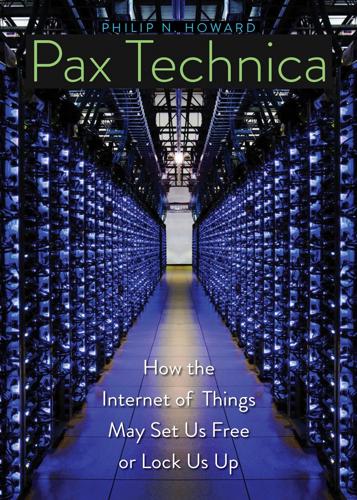
Pax Technica: How the Internet of Things May Set Us Free or Lock Us Up
by
Philip N. Howard
Published 27 Apr 2015
Belarus’s security services are often unsure about how to react. Yakub Kolas Square normally contains skateboarders, promenading couples, and grandmothers herding grandchildren. But on particular days, chosen by some mysterious process of consensus, the square fills to capacity. The park benches are suddenly all occupied. People perch on curbs. Howard Rheingold famously called these gatherings “smart mobs.”11 And at 8 P.M., a chorus of mobile phones goes off: chirps, chimes, and pop music come together to make a cacophony of absurd ringtones. The police are there, because they too can read the website where instructions for how to pull off this smart mob are posted.
…
Jarrett Murphy, “1 Billion Live in Slums,” CBS News, October 8, 2003, accessed September 30, 2014, http://www.cbsnews.com/news/1-billion-live-in-slums/. 10. “Global Issues: Refugees,” UN Global Issues, accessed June 20, 2014, http://www.un.org/en/globalissues/refugees/; Imogen Foulkes, “Global Refugee Figures Highest Since WW2, UN Says,” News, June 20, 2014, accessed September 30, 2014, http://www.bbc.com/news/world-27921938. 11. Howard Rheingold, Smart Mobs: The Next Social Revolution (New York: Basic, 2003). 12. F. Edwards, Philip N. Howard, and Mary Joyce, Digital Activism and Non-Violent Conflict (Seattle: Digital Activism Research Project, November 2013), accessed September 30, 2014, http://digital-activism.org/2013/11/report-on-digital-activism-and-non-violent-conflict/. 13.

Social Life of Information
by
John Seely Brown
and
Paul Duguid
Published 2 Feb 2000
It can be enough for the innocent, too, as the former Kennedy press secretary Pierre Salinger showed when he slapped his personal warrant on a 'Net-borne conspiracy theory about flight TWA 800. More experienced users have learned to triangulate what comes across the 'Net in other ways. The celebrated "virtual community" that Howard Rheingold wrote about, for example, was backed up by a good deal of old-fashioned telephone calling, meeting, and conventional neighborliness.23 Many people buy only from companies with an established off-line existence. On-line auction houses suggest that bidders get in touch with suppliers to judge their reliability for themselves.
…
Books, scholarly dissertations, and miles of newsprint have considered these "virtual communities." Roger Fidler's Mediamorphosis noted how in France, enterprising freelancers turned the Minitel system, designed by the post Page 190 office to serve principally as an electronic phone book, into a messaging system and in the process created innumerable interest groups. Howard Rheingold's The Virtual Community described the friendships and even marriages that sprang out of an early West Coast messaging system called the WELL (Whole Earth 'Lectronic Link), while Julian Dibbell's My Tiny Life has made public his account of a digital community that developed through a computer running at PARC that anyone could reach from an Internet connection.

The Weightless World: Strategies for Managing the Digital Economy
by
Diane Coyle
Published 29 Oct 1998
It was not long after the Bank for International Settlements published a reassuring assessment of the threat e-money posed to monetary control that the first financial company in London, Currency Management Corporation, launched a currency trading service on the Internet. It opened without authorisation from the local regulator, the Securities and Futures Association, but is nevertheless perfectly free to trade. As Net expert Howard Rheingold points out,13 money is already an electronic abstraction. Of course we still use a lot of the crinkling and jangling stuff in everyday life, but the bulk of the developed world’s monetary transactions take place between computers. The technology for private currencies is already in place. Their emergence waits only for our monetary habits to change.
…
Danny Quah (October 1996) Discarding Non-stick Frying Pans for Economic Growth, Centrepiece, Centre for Economic Performance, London School of Economics, London. Gregory Rawlins (1996) Moths to the Flame, MIT Press, Cambridge, MA. Robert Reich (1991) The Work of Nations, Simon & Schuster, London. Howard Rheingold (1994) The Virtual Community, Secker & Warburg, London. David Ricardo (first published 1817) Principles of Political Economy and Taxation. Jeremy Rifkin (1995) The End of Work, Tarcher/Putnam. Gillian Rose (1996) Mourning Becomes the Law: Philosophy and Representation, Cambridge University Press, Cambridge.
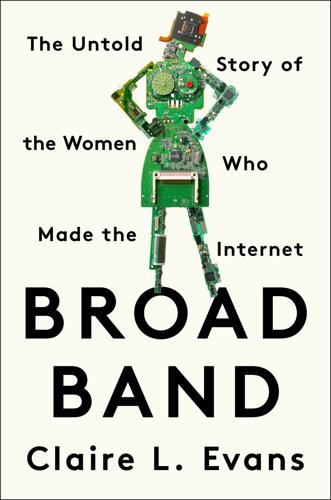
Broad Band: The Untold Story of the Women Who Made the Internet
by
Claire L. Evans
Published 6 Mar 2018
These “hosts” had carte blanche to engineer the particular cultural atmospheres of their conferences. “Echo is Echo because of the hosts,” she wrote in 1998. “The relationships we have are formed by what we tell. Hosts get us to tell each other everything.” In order for Echo to thrive, Horn realized that it needed a core base of vocal, participatory users. Howard Rheingold, in The Virtual Community: Homesteading on the Electronic Frontier—a book about virtual communities that completely omits Echo, incidentally—documents this strategy at work across the network, from a BBS in France with paid “animateurs” culled from its most active users to The WELL hosts in his own backyard.
…
“Stacy was more of an autocrat”: Mittelmark, interview with the author, July 21, 2016. “he was, like, really subversive”: Bowe, interview with the author, July 26, 2016. “When the world that you’re in”: Ibid. “Echo is Echo because of the hosts”: Horn, Cyberville, 39. “animateurs” culled from: Howard Rheingold, The Virtual Community: Homesteading on the Electronic Frontier (Cambridge, MA: MIT Press, 2000), 235. “Hosts are the people”: Rheingold, The Virtual Community, 26. “front page of the Internet”: Adrian Chen, “The Laborers Who Keep Dick Pics and Beheadings Out of Your Facebook Feed,” Wired, October 23, 2014, www.wired.com/2014/10/content-moderation.
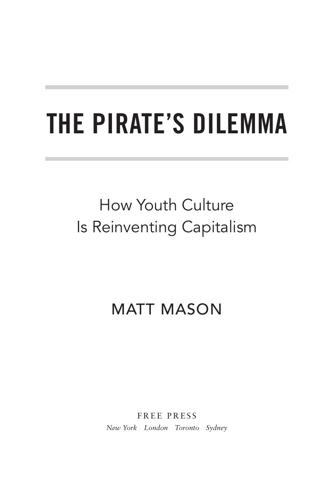
The Pirate's Dilemma: How Youth Culture Is Reinventing Capitalism
by
Matt Mason
A nanometer is one billionth of a meter (the amount your fingernail grows in one second), and we already have computers that measure just thirty nanometers across. Computers have become so small and cheap to produce, they can be both invisible and everywhere. “For the better part of a century,” writes Howard Rheingold in Smart Mobs, “people have lived among invisible electric motors and thought nothing of it. The time has come to consider the consequences of computers disappearing into the background the way motors did.” The consequences are what some people are referring to as “the Internet of things.” This is a world where objects are connected via tiny but widely distributed computers, such as radio-frequency identification chips (RFID), which cost less than 5 cents each and are already being used in products by Wal-Mart, Target, and Tesco to track goods.
…
Kalle Lasn, interview by author, May 24, 2006 (other quotes from Lasn that appear throughout this chapter are taken from the same interview). Ji Lee, interview by author, June 29, 2006 (other quotes from Lee that appear throughout this chapter are taken from the same interview). Ji Lee, Talk Back: The Bubble Project (New York: Mark Batty Publisher, 2006). Howard Rheingold, Smart Mobs (New York: Basic Books, 2006), p. 88. Elizabeth Biddlecombe, “UN predicts ‘Internet of things’,” BBC News, November 17, 2005. http://news.bbc.co.uk/2/hi/technology/4440334.stm. Elliott Malkin, “Cemetery 2.0,” We Make Money Not Art, November 17, 2006. http://www.we-make-money-not-art.com/archives/009130.php.
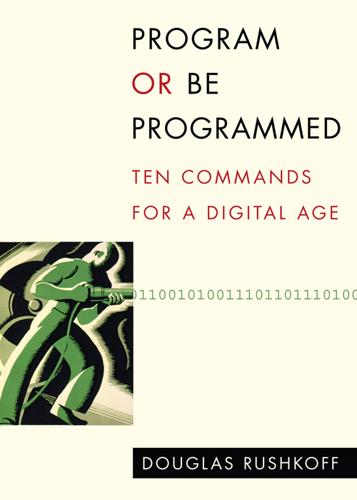
Program Or Be Programmed: Ten Commands for a Digital Age
by
Douglas Rushkoff
Published 1 Nov 2010
To others, including me, You Own Your Own Words served as an ethical foundation: You, the human being on the other side of the modem, are responsible for what you say and do here. You are accountable. Given that the WELL was developed by farsighted cultural pioneers such as Stewart Brand, Larry Brilliant, Kevin Kelly, and Howard Rheingold, we shouldn’t be surprised that they sought to compensate for some of the disconnection online between people and their words. And that’s why, from the very beginning, I decided to be myself online. I’ve only used one name on the Internet: Rushkoff. I figured the only real danger was from government, corporations, or some other “big brother” out there using what I posted against me in some future McCarthy hearings.
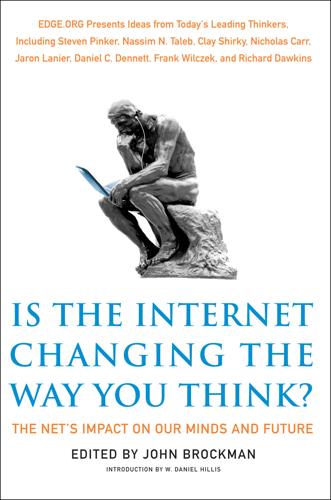
Is the Internet Changing the Way You Think?: The Net's Impact on Our Minds and Future
by
John Brockman
Published 18 Jan 2011
Taleb Calling You on Your Crap: Sean Carroll How I Think About How I Think: Lera Boroditsky I Am Not Exactly a Thinking Person— I Am a Poet: Jonas Mekas Kayaks Versus Canoes: George Dyson The Upload Has Begun: Sam Harris Hell if I Know: Gregory Paul What I Notice: Brian Eno It’s Not What You Know, It’s What You Can Find Out: Marissa Mayer When I’m on the Net, I Start to Think: Ai Weiwei The Internet Has Become Boring: Andrian Kreye The Dumb Butler: Joshua Greene Finding Stuff Remains a Challenge: Philip Campbell Attention, Crap Detection, and Network Awareness: Howard Rheingold Information Metabolism: Esther Dyson Ctrl + Click to Follow Link: George Church Replacing Experience with Facsimile: Eric Fischl and April Gornik Outsourcing the Mind: Gerd Gigerenzer A Prehistorian’s Perspective: Timothy Taylor The Fourth Phase of Homo sapiens: Scott Atran Transience Is Now Permanence: Douglas Coupland A Return to the Scarlet-Letter Savanna: Jesse Bering Take Love: Helen Fisher Internet Mating Strategies: David M.
…
Whatever works! Those wishing to promote the visibility and, dare one say, usefulness of their own work and of their disciplines should hotly pursue online availability of all types of substantive texts and, crucially, inclusive indexing. Attention, Crap Detection, and Network Awareness Howard Rheingold Communications expert; author, Smart Mobs Digital media and networks can empower only the people who learn how to use them—and pose dangers to those who don’t know what they are doing. Yes, it’s easy to drift into distraction, fall for misinformation, allow attention to fragment rather than focus, but those mental temptations pose dangers only for the untrained mind.

The Future of Money
by
Bernard Lietaer
Published 28 Apr 2013
'As far into the future as we can see, information will be playing the prima donna role in economic history that physical labour, stone, bronze, land, minerals, metals and energy once played.’ As information becomes that key resource, its unique features will shape a very different society. For our purposes, Harlan Cleveland and Howard Rheingold have made the best inventories of those characteristics: - Information is shared, not exchanged. With any of the previous focus resources from a flint spear-point to land, from a horse to a barrel of oil - if you acquired it from me, I lost it to you. After an exchange that involves information, both of us have it.
…
Besides the non-profit sector, the Mall of the Americas and other mainstream businesses are involved, including National City Bank which provides the accounting system and statements in C$Ds. Internet Money for Virtual Communities One of the most intriguing and encouraging aspects of Internet developments has been the mushrooming of virtual communities compellingly documented in Howard Rheingold’s Virtual Communities: Homesteading on the Electronic Frontier. Community has become such a scarce resource in our societies that the appearance of a new way to create it is indeed remarkable. Virtual communities versus a monopoly of national currencies on the Net The process by which this miracle has occurred is often not fully understood.

Personal Kanban: Mapping Work, Navigating Life
by
Jim Benson
and
Tonianne Demaria Barry
Published 2 Feb 2011
Adding fuel to the fire are the regulars at Seattle Lean Coffee: Jeremy Lightsmith, Garth Tutor, Joe Justice, Wes Maldonado, Jon Bach, Dawn Hemminger, and Jesse Brown. And my friends and colleagues who, over the years, joined me for a stroll through an idea, provided that key epiphany-producing comment, or thoughtful redirection. They include Nancy White, Jay Fienberg, John and Susan von Seggern, Jerry Michalski, Howard Rheingold, Jon Ramer, Jeanine Anderson, Greg MacKinnon, Ken Thompson, Frank Provenzano, Ed Vielmetti, Kevin Jahne, Alan Cady, Bart Cima, Chad Nabity, Simon Bone, Christopher J. Zorn, Monte Page, Jessica Margolin and Trevor Blake. If you pick one thing to do, and do it completely, people will notice. ~ Trevor Blake For Tonianne: Duncan, who through hell, heaven, and all that lies between, has been my guide.

Tools for Thought: The History and Future of Mind-Expanding Technology
by
Howard Rheingold
Published 14 May 2000
Tools For Thought by Howard Rheingold April, 2000: a revised edition of Tools for Thought is available from MIT Press, including a revised chapter with 1999 interviews of Doug Engelbart, Bob Taylor, Alan Kay, Brenda Laurel, and Avron Barr. Tools for Thought is an exercise in retrospective futurism; that is, I wrote it in the early 1980s, attempting to look at what the mid 1990s would be like. My odyssey started when I discovered Xerox PARC and Doug Engelbart and realized that all the journalists who had descended upon Silicon Valley were missing the real story. Yes, the tales of teenagers inventing new industries in their garages were good stories.
…
My heartfelt thanks to Rita Aero, Avron Barr, John Brockman, Donald Day, Robert Eckhardt, Doug Engelbart, Brenda Lauel, Howard Levine, Judith Maas, Geraldine Rheingold, Alan Rinzler, Charles Silver, Marshall Smith, Bob Taylor, David Rodman, and Gloria Warner. And thanks to Alan Turner, who originally prepared my words for web publication. Tools for Thought ©1985 howard rheingold, all rights reserved worldwide. Chapter One: The Computer Revolution Hasn't Happened Yet South of San Francisco and north of Silicon Valley, near the place where the pines on the horizon give way to the live oaks and radiotelescopes, an unlikely subculture has been creating a new medium for human thought.
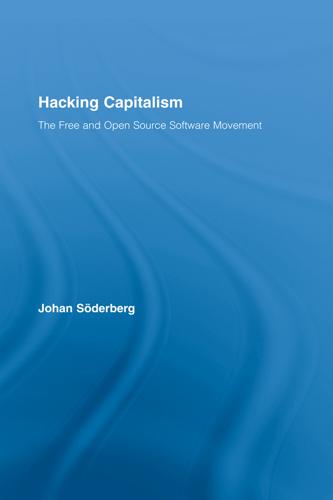
Hacking Capitalism
by
Söderberg, Johan; Söderberg, Johan;
John Frow, Time & Commodity Culture—Essays in Cultural Theory and Postmodernity (Oxford: Clarendon Press, 1997), 207. 29. Peter Wayner, Free for All—How Linux and the Free Software Movement Undercut the High-Tech Titans, (New York: HarperBusiness 2000), 157, my emphasis. 30. Howard Rheingold coined the term ’virtual community’. Howard Rheingold, The Virtual Community—Homesteading on the Electronic Frontier (Cambridge, Mass.: MIT Press, 2000). 31. Robert Ellickson has demonstrated the pivotal role of norms rather than law in upholding social order. For norms to regulate social behavior, however, a few conditions have to be met: “To achieve order without law, people must have continuing relationships, reliable information about past behavior, and effective countervailing power” Robert Ellickson, Order Without Law: How Neighbours Settle Disputes (Cambridge, Mass.: Harvard University Press, 1991), 284. 32.

As the Future Catches You: How Genomics & Other Forces Are Changing Your Work, Health & Wealth
by
Juan Enriquez
Published 15 Feb 2001
Robert Metcalf, founder of 3Com, argues the value of a network is proportional to the square of the number of people in it. 9. Attempting to regulate these decentralized networks is certain to give bureaucrats ulcers— or worse. See, for example, Peter Maas, “Silicorn Valley,” Wired, September 1997: 131–38. 10. You can read about SETI in Howard Rheingold’s “You Got the Power,” Wired, August 2000: 176. Or go directly to www.seti.org/. 11. See www.fightaidsathome.com. 12. Federal Reserve Bank of Dallas. 1997 Annual Report: “Time Well Spent: The Declining Real Cost of Living in America.” 13. While the Internet has certainly changed the nature of shopping, it is still hard to go up against merchandising behemoths like Wal-Mart.
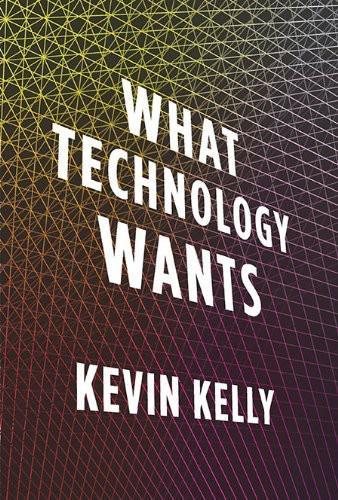
What Technology Wants
by
Kevin Kelly
Published 14 Jul 2010
The book’s layout was done by Nancy Resnick and the index compiled by Cohen Carruth, Inc. The following readers endured the first draft of this book and provided me with valuable and constructive feedback: Russ Mitchell, Michael Dowd, Peter Schwartz, Charles Platt, Andreas Lloyd, Gary Wolf, and Howard Rheingold. During the course of researching this book I interviewed, spoke with, or corresponded with the smartest people I know. Listed in alphabetical order, each of these experts lent their valuable time and insight for my project. Of course, any errors in transmitting their thoughts are mine. Chris Anderson Gordon Bell Katy Borner Stewart Brand Eric Brende David Brin Rob Carlson James Carse Jamais Cascio Richard Dawkins Eric Drexler Freeman Dyson George Dyson Niles Eldredge Brian Eno Joel Garreau Paul Hawken Danny Hillis Piet Hut Derrick Jensen Bill Joy Stuart Kauffman Donald Kraybill Mark Kryder Ray Kurzweil Jaron Lanier Pierre Lemonnier Seth Lloyd Lori Marino Max More Simon Conway Morris Nathan Myhrvold Howard Rheingold Paul Saffo Kirkpatrick Sale Tim Sauder Peter Schwartz John Smart Lee Smolin Alex Steffen Steve Talbot Edward Tenner Sherry Turkle Hal Varian Vernor Vinge Jay Walker Peter Warshall Robert Wright Annotated Reading List Of the hundreds of books I consulted for this project, I found the following selected ones to be the most useful for my purposes.
…
Chris Anderson Gordon Bell Katy Borner Stewart Brand Eric Brende David Brin Rob Carlson James Carse Jamais Cascio Richard Dawkins Eric Drexler Freeman Dyson George Dyson Niles Eldredge Brian Eno Joel Garreau Paul Hawken Danny Hillis Piet Hut Derrick Jensen Bill Joy Stuart Kauffman Donald Kraybill Mark Kryder Ray Kurzweil Jaron Lanier Pierre Lemonnier Seth Lloyd Lori Marino Max More Simon Conway Morris Nathan Myhrvold Howard Rheingold Paul Saffo Kirkpatrick Sale Tim Sauder Peter Schwartz John Smart Lee Smolin Alex Steffen Steve Talbot Edward Tenner Sherry Turkle Hal Varian Vernor Vinge Jay Walker Peter Warshall Robert Wright Annotated Reading List Of the hundreds of books I consulted for this project, I found the following selected ones to be the most useful for my purposes.

The Facebook Effect
by
David Kirkpatrick
Published 19 Nov 2010
Begun in 1979, it enabled people to post messages to groups dedicated to specific topics. It functions to this day. In 1985, Stewart Brand, Larry Brilliant, and a couple of others launched an electronic bulletin board called The Whole Earth ’Lectronic Link, or Well, in San Francisco. In 1987, Howard Rheingold, a big user of the Well, published an essay in which he coined the term virtual community to describe this new experience. “A virtual community is a group of people who may or may not meet one another face to face,” Rheingold wrote, “and who exchange words and ideas through the mediation of computer bulletin boards and networks.”
…
Social Networking and the Internet Page 66 In a 1968 essay by J. C. R. Licklider: J. C. R. Licklider and Robert Taylor, “The Computer as a Communication Device,” Science and Technology (April 1968), http://www.kurzweilai.net/meme/frame.html?main=/articles/art0353.html (accessed December 11, 2009). 67 “A virtual community is a group of people”: Howard Rheingold, “Virtual Communities—Exchanging Ideas Through Computer Bulletin Boards,” Whole Earth Review (Winter 1987), http://findarticles.com/p/articles/mi_m1510/is_n57/ai_6203867/ (accessed November 15, 2009). 67 Two Internet sociologists, danah boyd and Nicole Ellison: danah boyd and Nicole Ellison, “Social Network Sites: Definition, History, And Scholarship,” Journal of Computer-Mediated Communication 13 (2007), http://jcmc.indiana.edu/vol13/issue1/boyd.ellison.html (accessed November 15, 2009). 69 Nonetheless, by 1999 sixdegrees had reached: Details about sixdegrees from interview and email followup with Andrew Weinreich, 2009. 74 But, according to Stealing MySpace: Julia Angwin, Stealing MySpace: The Battle to Control the Most Popular Website in America (New York: Random House, 2009), 52. 76 In 2003, Angwin notes, the percentage of Americans: Ibid. 77 Buyukkokten himself once bragged: Luke O’Brien, “Poking Facebook,” 02138 Magazine (November 2007), www.02138mag.com/magazine/article/1724.html (accessed November 28, 2009). 80 Previously they’d won a gold medal: Ibid. 83 The civil lawsuit filed on behalf of the three alleges: ConnectU, Inc. v.
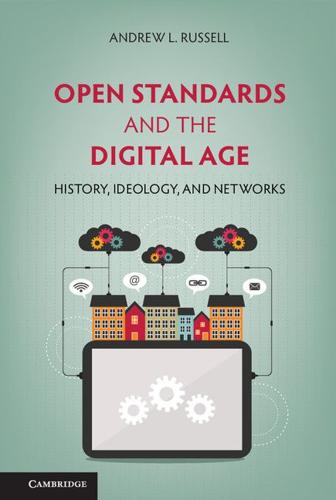
Open Standards and the Digital Age: History, Ideology, and Networks (Cambridge Studies in the Emergence of Global Enterprise)
by
Andrew L. Russell
Published 27 Apr 2014
For consistency, I will use “ARPA.” 7 The proper rendering of the network’s name is ARPANET, but I have chosen to use “Arpanet” for aesthetic purposes. 8 J. C. R. Licklider, “Man-Computer Symbiosis,” IRE Transactions on Human Factors in Electronics Vol. HFE-1 (March 1960), 4–11; M. Mitchell Waldrop, The Dream Machine: J. C. R. Licklider and the Revolution That Made Computing Personal (New York: Viking, 2001); Howard Rheingold, Tools for Thought: The History and Future of Mind-Expanding Technology (Cambridge, MA: The MIT Press, 2000 [1985]), 132–151. 9 David Hart, Forged Consensus: Science, Technology, and Public Policy in the United States, 1921–1953 (Princeton, NJ: Princeton University Press, 1998); Bruce L.
…
Russell, “Ideological and Policy Origins of the Internet, 1957–1969,” paper presented to TPRC 2001, the 29th Research Conference on Communication, Information, and Internet Policy, Washington, DC, October 28, 2001. 10 Fubini, as director of defense research and engineering, was the only step in the chain of command between the director of ARPA and the secretary of defense. Ruina was ARPA director between February 1961 and September 1963. Jack Ruina, oral history interview by William Aspray, April 20, 1989, Cambridge, Massachusetts. Charles Babbage Institute, University of Minnesota, Minneapolis. 11 Howard Rheingold, Tools for Thought, 138. The evocative language of “religious conversion” also appears in J. C. R. Licklider, oral history interview by William Aspray and Arthur L. Norberg, October 28, 1988, Cambridge, Massachusetts, Charles Babbage Institute, University of Minnesota, Minneapolis; and John A.
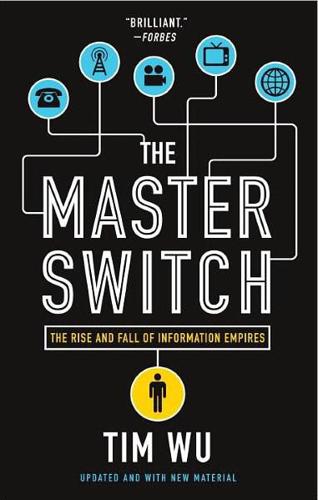
The Master Switch: The Rise and Fall of Information Empires
by
Tim Wu
Published 2 Nov 2010
Computers were fearsome creatures, the size of rooms, jealously guarded by companies and government agencies. Their main function was mass-produced arithmetic—“data processing.” The archetype was the IBM AN/FSQ-7, the largest computer in human history, an electronic version of the Flying Fortress. As the scholar of media Howard Rheingold describes it, “the computers weighed three hundred tons, took up twenty thousand feet of floor space, and were delivered in eighteen large vans apiece. Ultimately, the air force bought fifty-six of them.”3 There could be no Internet as we know it without a concept of the computer as something beyond an adding machine—this had to come first.
…
Peter Alesso and Craig Forsythe Smith, Connections: Patterns of Discovery (Hoboken, NJ: Wiley & Sons, 2008), 60; for his life, M. Mitchell Waldrop, The Dream Machine: J.C.R. Licklider and the Revolution That Made Computing Personal (New York: Penguin, 2002). 3. For Rheingold’s description of the AN/FSQ-7, see Howard Rheingold, Tools for Thought: The History and Future of Mind-Expanding Technology (Cambridge, MA: MIT Press, 2000), 142–44. 4. J.C.R. Licklider, “Man-Computer Symbiosis,” IRE Transactions on Human Factors in Electronics HFE-1 (1960): 4. 5. John Markoff, What the Dormouse Said: How the Sixties Counterculture Shaped the Personal Computer Industry (New York: Penguin, 2005), 9. 6.

Smart Cities: Big Data, Civic Hackers, and the Quest for a New Utopia
by
Anthony M. Townsend
Published 29 Sep 2013
When a tsunami struck Japan in 2011, triggering the shutdown of most of the nation’s nuclear generators, the multistory digital screens of Tokyo’s Shibuya Crossing—the Asian equivalent of Manhattan’s Times Square—went dark for weeks. Normally crisscrossed by mobile phone–toting “smart mobs,” as author Howard Rheingold dubbed them, it is a place that lives in my memory as the paragon of future urbanism. Tokyo survived its digital lobotomy—there’s still enough of the conventional infrastructure in place to live life manually, so to speak. But in future cities even the most mundane tasks will draw upon sensors, computers, and communications networks scattered across the cloud.
…
As Red Burns, the cofounder of NYU’s Interactive Telecommunications Program, once described the curriculum’s goal: “we are training a new kind of professional—one who is comfortable with both analytical and creative modes of thinking.”35 Similarly, it won’t be enough to just put together teams with both planners and programmers. Smart-city designers will also need to be transdisciplinary—able to think across disciplines inside their own minds. As author Howard Rheingold describes it, transdisciplinarity “means educating researchers who can speak languages of multiple disciplines—biologists who have an understanding of mathematics, mathematicians who understand biology.”36 Architects and engineers of smart cities will need to draw on both informatics and urbanism simultaneously.

The Future of Ideas: The Fate of the Commons in a Connected World
by
Lawrence Lessig
Published 14 Jul 2001
The computers simply process the data as instructed by the organizing machine, and the processed data is then shipped back to the organizing machine. From the user's perspective, the nature of the data being processed could be completely obscure. The point is that the idle time of the machine could be harnessed to the end of getting something done. 30 As Howard Rheingold describes it: At its most basic level, distributed processing is a way of harvesting a resource that until now has been squandered on a massive scale: unused CPU cycles. Even if you type two characters per second on your keyboard, you're using only a fraction of your machine's power. [Distributed computing bands together millions of computers] on the Net to create, with their downtime, ad hoc supercomputers.31 The potential of peer-to-peer technologies reaches far beyond simple file transfer or the sharing of processing cycles.
…
(Beijing and Cambridge, Mass: O'Reilly, 2001), 3-15 (describing how the original Internet was “fundamentally designed as a peer-to-peer system” but became increasingly client/server oriented over time owing to Web browser applications, firewalls, and other factors). 28 For background on SETI, see “History of SETI,” at http://www.seti-inst.edu/ general/history.html; Eric Korpela et al., “SETI@home: Massively Distributed Computing for SETI,” at http://www.computer.org/cise/articles/seti.htm. 29 Howard Rheingold, “You Got the Power,” Wired (August 2001), at http://www.wired. com/wired/archive/8.08/comcomp.html?pg=1&topic=&topic_set=. 30 For a useful survey of issues related to P2P, see Peer-to-Peer: Harnessing the Benefits of a Disruptive Technology, Andrew Oram, ed. (Beijing and Cambridge, Mass.: O'Reilly, 2001).

The People vs Tech: How the Internet Is Killing Democracy (And How We Save It)
by
Jamie Bartlett
Published 4 Apr 2018
They carefully designed a representative system with checks, balances and periodic elections that would delegate authority upwards and serve as a check on the confusion and fury of the multitude. Anyone who has spent more than five minutes on Twitter would recognise Charles Mackay’s definition. The modern technologist, however, doesn’t believe the mob is faceless and mad, but rather wise and just: he reads books like Howard Rheingold’s Smart Mobs and talks endlessly about ‘crowd sourcing’ solutions and ‘the wisdom of the crowd’. He trusts the ‘hive mind’. Crowds certainly are wise when it comes to solving technical, non-value based problems like fixing computer bugs, but politics is very different.4 Humans were perfectly good at killing each other because of politics long before the iPhone turned up.

Survival of the Richest: Escape Fantasies of the Tech Billionaires
by
Douglas Rushkoff
Published 7 Sep 2022
While they may be crying all the way to the bank, these millionaire turncoats do a good job of explaining how their platforms surveilled users and then leveraged the information they collected to turn people into more extreme versions of themselves. Of course, most of them were making arguments lifted from the works of people like Sherry Turkle, Cliff Nass, Howard Rheingold, Andrew Keen, Evgeny Morozov, Astra Taylor, Richard Barbrook, Jerry Mander, Cory Doctorow, Marina Gorbis, dana boyd, Nick Carr, Mark Bauerlain, and even Raffi. Tech critics have been writing about the impact of social media manipulation on our psyche and society for decades. It’s great that the developers responsible for these misdeeds are finally agreeing with these assessments, even if they need to feel as if they’ve discovered the downsides all by themselves—like brand-new intellectual property.
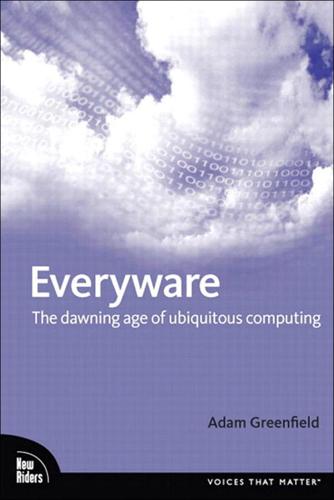
Everyware: The Dawning Age of Ubiquitous Computing
by
Adam Greenfield
Published 14 Sep 2006
See also everyware; ubicomp breakdowns/failures literature on modularity opting out of seamlessness Unified Modeling Language (UML) Uniform resource Identifier (URI) UPC numbers user experience (UX) users, See also human body; people UWB (ultra-wideband) technology V voice-recognition W wall screens Want, Roy wearable computing Web standards. See also Internet Weiser, Mark Wi-Fi technology Wikipedia WiMaX standard X Xerox Palo Alto Research Center (ParC) XML (eXtensible Markup Language) Acknowledgments The three greatest friends this book ever had have been Liz Danzico, Howard Rheingold and Christina Wodtke. very simply, Everyware would not exist without their influence; my gratitude to them is immense. I would also like to thank Peter Morville and Jeffrey Zeldman for their crucial early enthusiasm. At Peachpit, Nancy Aldrich-Ruenzel showed extraordinary faith in my vision for this book, affording me leeway few authors ever enjoy; I was both moved and inspired.
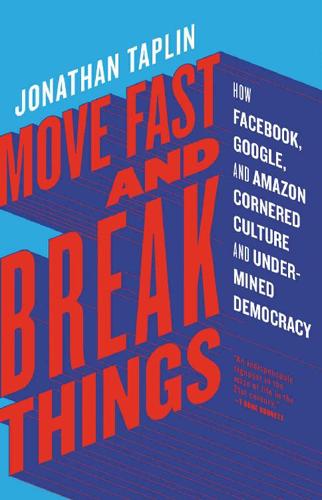
Move Fast and Break Things: How Facebook, Google, and Amazon Cornered Culture and Undermined Democracy
by
Jonathan Taplin
Published 17 Apr 2017
But in 1989 something weird happened. The notion of the “hacker ethic” became a contested trope. It started with an online forum on the WELL organized by Harper’s Magazine. The subject was hacking, and Paul Tough, a Harper’s editor, had recruited Brand and a few of his most important WELL members, including Howard Rheingold, Kevin Kelly, and John Perry Barlow, to participate. Barlow, a shaggy, bearded man with a fondness for colorful cowboy shirts, is a true American character. He is a failed Wyoming rancher, a former Catholic mystic, and a former Grateful Dead lyricist. He was also an early proponent of cyberspace as the new American frontier—as lawless as Wyatt Earp’s Tombstone.

Memory Machines: The Evolution of Hypertext
by
Belinda Barnet
Published 14 Jul 2013
The metaphor also seemed to stick in hypertext theory for many years; Joyce (1998), Dickey (1995), Landow (1992), Nunes (1999) and Johnson-Eilola (1994), to name but a few of the ‘first wave’ theorists, explicitly conjure images of exploration and mapmaking to describe the aesthetics of hypertext, due in no small part to Storyspace and to Bolter’s book Writing Space. Some ideas, as Howard Rheingold wrote in Tools for Thought more than 20 years ago, are like viruses: if they are released at the right moment, they can infect an entire culture (Rheingold 1985, 128). At the time he started working with Bolter, Joyce had ambitions of his own: he wanted to write a book that changed with each reading, as we have seen.

Age of the City: Why Our Future Will Be Won or Lost Together
by
Ian Goldin
and
Tom Lee-Devlin
Published 21 Jun 2023
What if all of humanity could be brought into a single network of communication and information? Could such a technology make cities’ ancient role as loci of community redundant, and allow people to finally come together and stop defining the world in terms of ‘us’ and ‘them’? Not too long ago, many had such utopian hopes of the internet. In 1993, the writer Howard Rheingold published The Virtual Community, in which he described with breathless enthusiasm the emergence of The WELL – short for Whole Earth ’Lectronic Link – a type of embryonic social network that allowed members to connect with one another over the internet and build shared interest groups. In 1996, journalist and cyber optimist John Perry Barlow published his Declaration of the Independence of Cyberspace, in which he described his vision for the internet as ‘a world that all may enter without privilege or prejudice accorded to race, economic power, military force, or station of birth … where anyone, anywhere may express his or her beliefs, no matter how singular, without fear of being coerced into silence or conformity’.1 The fact that key figures like Stewart Brand, who founded The WELL, were also central participants in the 1960s counterculture, with its egalitarian and universalist ethos, helps explain some of this utopian hyperbole.
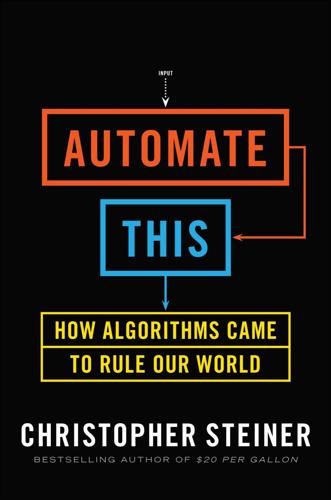
Automate This: How Algorithms Came to Rule Our World
by
Christopher Steiner
Published 29 Aug 2012
Charles Gillespie, Dictionary of Scientific Biography (New York: Charles Scribner’s Sons, 1976), p. 468. 41. Robert Bradley, Leonhard Euler, p. 412. 42. David Richeson, Euler’s Gem: The Polyhedron Formula and the Birth of Topology (Princeton, NJ: Princeton University Press, 2008), p. 86. 43. Howard Rheingold, Tools for Thought: The History and Future of Mind-Expanding Technology (New York: Simon & Schuster, 1986), p. 39. 44. Ivor Grattan-Guinness and Gérard Bornet, eds., George Boole: Selected Manuscripts on Logic and Its Philosophy (Basel: Birkhäuser Verlag, 1997), p. xiv. 45. Margaret A.
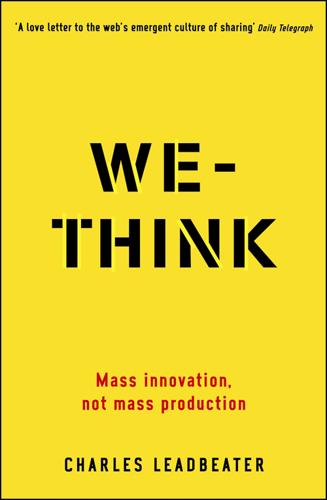
We-Think: Mass Innovation, Not Mass Production
by
Charles Leadbeater
Published 9 Dec 2010
Many other classical electric guitar videos have had several million hits. 2 For more on the likes of charlieissocoollike see Celia Hannon, Peter Bradwell, Charlie Tims, Video Republic, Demos, 2008. http://www.youtube.com/user/ charlieissocoollike 3 The World Turned Upside Down, Christopher Hill, Penguin, 1972 Chapter 1 1 Thomas Homer-Dixon (2006), The Upside of Down: Catastrophe, Creativity, and the Renewal of Civilisation (Souvenir Press Ltd, 2007) 2 Jane McGonigal, ‘Why I Love Bees: A Case Study in Collective Intelligence Gaming’, February 2007. Available from http://www.avantgame.com/McGonigal_ WhyILoveBees_Feb2007.pdf 3 In April 2007, for example, about 4,000 flash mobbers took over the main concourse of Victoria Station in London, armed with personal stereos, to dance for two hours, in the middle of the afternoon. See Howard Rheingold, Smart Mobs (Perseus Books, 2002) 4 Sanger’s work was funded by a company called Bomis, of which Wales was one of the directors. 5 Larry Sanger, ‘The Early History of Nupedia and Wikipedia’, in Chris DiBona, Danese Cooper and Mark Stone (Eds), Open Sources 2.0 (O’Reilly, 2006) 6 The most famous example was when an article alleged that a former aide to Robert Kennedy was involved in President John F.
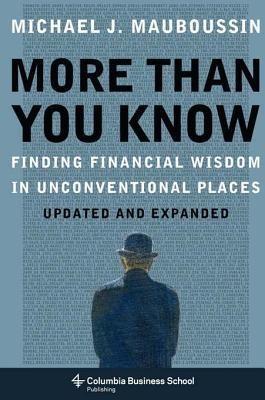
More Than You Know: Finding Financial Wisdom in Unconventional Places (Updated and Expanded)
by
Michael J. Mauboussin
Published 1 Jan 2006
Also see Edmund Burke and Graham Kendall, “Applying Ant Algorithms and the No Fit Polygon to the Nesting Problem,” University of Nottingham Working Paper, 1999, http://www.asap.cs.nott.ac.uk/publications/pdf/gk_ai99.pdf. 5 See Iowa Electronic Markets Web site, http://www.biz.uiowa.edu/iem. 6 James Surowiecki, “Decisions, Decisions,” The New Yorker, March 28, 2003, available from http://www.newyorker.com/archive/2003/03/24/030324ta_talk_surowiecki. 7 See Hollywood Stock Exchange Web site, http://www.hsx.com. 8 See Betfair Web site, http://www.betfair.com. 9 Alfred Rappaport and Michael J. Mauboussin, Expectations Investing (Boston: Harvard Business School Press, 2001), 132-34. 10 Howard Rheingold, Smart Mobs: The Next Social Revolution (New York: Perseus, 2002). 11 Ken Brown, “Stocks March to the Beat of War, Weak Economy,” Wall Street Journal, March 31, 2003. 30. Vox Populi 1 Michael Idinopulos and Lee Kempler, “Do You Know Who Your Experts Are?” The McKinsey Quarterly 4 (2003): 60-69; see http://www.mckinseyquarterly.com/article_abstract.asp?

The Rise of the Network Society
by
Manuel Castells
Published 31 Aug 1996
The advent of personal computing and the communicability of networks spurred the development of bulletin board systems (BBS), first in the United States, then worldwide. Bulletin board systems did not need sophisticated computer networks, just PCs, modems, and the telephone line. Thus, they became the electronic notice-boards of all kinds of interests and affinities, creating what Howard Rheingold named “virtual communities.”52 In the late 1980s, several million computer users were using computer-mediated communication in cooperative or commercial networks that were not part of the Internet. Often, these networks used protocols that were not compatible, so they shifted to Internet protocols, a move that, in the 1990s, assured their integration into the Internet and thus the expansion of the Internet itself.
…
This is particularly the case for the question that dominated the debate on the social dimensions of the Internet during the 1990s: does the Internet favor the development of new communities, virtual communities, or, instead, is it inducing personal isolation, severing people’s ties with society, and ultimately, with their “real” world? Howard Rheingold, in his pioneering book Virtual Communities marked the tone of the debate by forcefully arguing for the birth of a new form of community, bringing people together on-line around shared values and interests.85 Furthermore, on the basis of his own experience with WELL, a cooperative computer network in the San Francisco Bay area, he proposed the notion that communities built on-line could develop, as in his own case, into physical meetings, friendly parties, and material support for members of their virtual community.

What Would Google Do?
by
Jeff Jarvis
Published 15 Feb 2009
But it also makes the web perilous for businesses being talked about—unless they have the facility to listen to and join the conversation as it happens. Mobs form in a flash In this live connection machine, people of similar interests and goals—call them communities or call them mobs—can find each other, coalesce, organize, and act in an instant. Howard Rheingold dubbed them Smart Mobs in the title of his 2002 book. Rheingold chronicled the fall of Philippine president Joseph Estrada at the hands of a smart mob of tens of thousands who were gathered together in only an hour by SMS messages on phones that told them to “Go 2 EDSA,” an address in Manila, and to “Wear blck.”
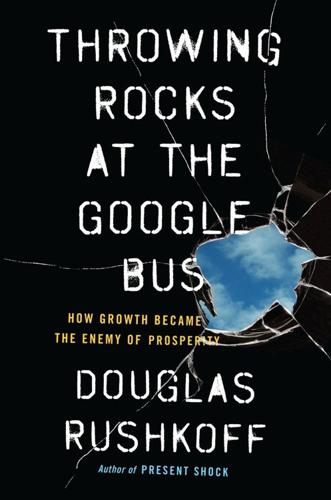
Throwing Rocks at the Google Bus: How Growth Became the Enemy of Prosperity
by
Douglas Rushkoff
Published 1 Mar 2016
I am grateful to every person who asked a question at a talk, e-mailed me about your situation, called in to a radio show, raised your hand in class, commented on an article, or tweeted me a link. Don’t stop. I am: http://rushkoff.com, douglas@rushkoff.com, and @rushkoff on Twitter. For implanting the dream of how a digital society and economy might function, I thank Internet cultural pioneers including Howard Rheingold, Mark Pesce, David Pescovitz, Mark Frauenfelder, Xeni Jardin, Cory Doctorow, John Barlow, Jaron Lanier, RU Sirius, Andrew Mayer, Richard Metzger, Evan Williams, everyone on the Well, Richard Stallman, George P’or, Neal Gorenflo, Marina Gorbis, and Michel Bauwens. For leading digital enterprises in ways worth writing about, thanks to Scott Heiferman, Ben Knight, Zach Sims, Slava Rubin, the Robin Hood Cooperative, Enspiral, and Jimmy Wales.

The Sharing Economy: The End of Employment and the Rise of Crowd-Based Capitalism
by
Arun Sundararajan
Published 12 May 2016
—Frederic Mazzella, OuiShare magazine interview, January 14, 2013 The Internet has existed as space for commercial exchange for over two decades. Now well into the new millennium, it is easy to forget that in the mid to late 1990s, the Internet was both a scene of frenzied excitement and a site of deep apprehension, fear, and moral panic. After all, although some Internet enthusiasts like Howard Rheingold were staking out the “virtual frontier” of the Internet, others were warning people that the Internet was a potential minefield of illicit affairs, pornography, and (of course) fraudulent activities. Over the past two decades, as both the utopian speculations and paranoid misconceptions about the Internet have receded, it has become an integral part of our everyday lives.
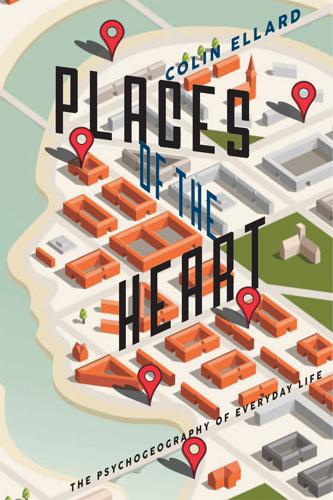
Places of the Heart: The Psychogeography of Everyday Life
by
Colin Ellard
Published 14 May 2015
no-ist 10Much illuminating information about the video game industry can be found at the website of the Entertainment Software Rating Board. Available at: http://www.esrb.org/about/video-game-industry-statistics.jsp 11An early and entertaining account of teledildonics titled “Teledildonics: Reach Out and Touch Someone” was written by Howard Rheingold in the journal Mondo 2000 (Summer, 1990). The article, complete with an opening cheeky limerick, is available in the book Arthur Berger (Ed.), The Postmodern Presence: Readings on Postmodernism in American Culture and Society (Rowman Altamira, New York, 1998). 12Project Syria and the virtual Aleppo experience is described at the Immersive Journalism website at: http://www.immersivejournalism.com/ 13The article by Rosenberg, Baughman and Bailenson describing the virtual superhero effect, titled “Virtual Superheroes: Using Superpowers in Virtual Reality to Encourage Prosocial Behavior,” was published in the journal PLOS One (2013, Volume 8, pages 1–9). 14George Stratton’s description of the inverting goggles experiments can be found in an ancient paper titled “Some Preliminary Experiments on Vision Without Inversion of the Retinal Image,” in the journal Psychological Review, (1896, Volume 3, pages 611–617).

Emergence
by
Steven Johnson
Because each topic area attracted a smaller subset of the overall population, visiting each one felt like returning to an old block in a familiar part of town, and running into the same cast of characters that you had found there the last time you visited. ECHO and the Well had a certain homeostatic balance in those early years—powerfully captured in Howard Rheingold’s book The Virtual Community—and part of that balance came from the community’s own powers of self-organization. But neither was a pure example of bottom-up behavior: the topic areas, for instance, were central-planning affairs, created by fiat and not by footprints; both communities benefited from the strong top-down leadership of their founders.

Britain Etc
by
Mark Easton
Published 1 Mar 2012
In Britain, where the web was expanding rapidly, it was noted that the dire warnings of social catastrophe were matched by cyber-evangelists proclaiming the reverse. ‘The most transforming technological event since the capture of fire’ was how John Perry Barlow, lyricist for the Grateful Dead and digital rights activist, described the development of the Internet. The writer Howard Rheingold, one of the first to log on to an online community in San Francisco in the mid-1980s, claimed to have been ‘participating in the self-design of a new kind of culture’. In his book The Virtual Community: Homesteading on the Electronic Frontier, Rheingold wrote of how he had plugged his computer into his telephone and made contact with the WELL (Whole Earth ‘Lectronic Link), a very early email network.

The Inmates Are Running the Asylum
by
Alan Cooper
Published 24 Feb 2004
Hildebrand, Laurie Hills, Peter Hirshberg, Larry Keeley, Gary Kratkin, Deborah Kurata, Tom Lafleur, Paul Laughton, Ellen Levy, Steven List, T.C. Mangan, David Maister, Robert May, Don McKinney, Kathryn Meadows, Lisa Mitchell, Geoffrey Moore, Bruce Mowery, Nate Myers, Ed Niehaus, Constance Petersen, Keith Pleas, Robert Reimann, John Rivlin, Howard Rheingold, Heidi Roizen, Neil Rubenking, Paul Saffo, Josh Seiden, Russ Siegelman, Donna Slote, Linda Stone, Toni Walker, Kevin Weeks, Kevin Welch, Dan Willis, Heather Winkle, Stephen Wildstrom, Terry Winograd, John Zicker, and Pierluigi Zappacosta. This "year long" project took 20 months, and my family showed great patience with me.
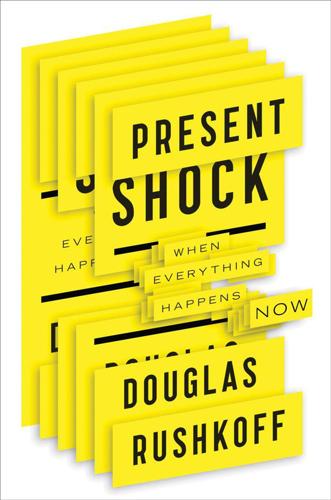
Present Shock: When Everything Happens Now
by
Douglas Rushkoff
Published 21 Mar 2013
Having their adventure ahead served as a light at the end of the long tunnel. Many people have engaged with me about the ideas in this book. These ideas are as much yours as they are mine. You are, in an order that makes sense to me on a fractalnoid level, Dr. Mark Filippi, Ryan Freilino, Jerry Michalski, Kevin Slavin, Curtis Faith, Howard Rheingold, Terence McKenna, Stewart Brand, Ken Goldberg, Clay Shirky, Amber Case, Cintra Wilson, Jonathan Lethem, Samantha Hinds, David Bennahum, Walter Kirn, Steven Bender, Jeff Newelt, Barak Goodman, Rachel Dretzin, David Pescovitz, Janet Sternberg, Lance Strate, Mark Stahlman, Paul Levinson, Alan Burdick, Renee Hobbs, Nathalis Wamba, and Hermenauts everywhere.

Cataloging the World: Paul Otlet and the Birth of the Information Age
by
Alex Wright
Published 6 Jun 2014
“Half or more of computer science is heads” (meaning, roughly, hippies), wrote Stewart Brand in a landmark profile of the Bay Area computer science scene for Rolling Stone magazine.17 Imbued with an ethos of individual freedom and self-expression, many of the early acolytes of the digital revolution—like Brand, Kevin Kelly, Howard Rheingold, and others—came of age during this period when top-down schemes were seen as tools of suppression and control, administered by “the Man.” Those counterculture idealists all opposed war and believed in the possibility of emerging technologies to usher in a new age of planetary consciousness and spiritual enlightenment.
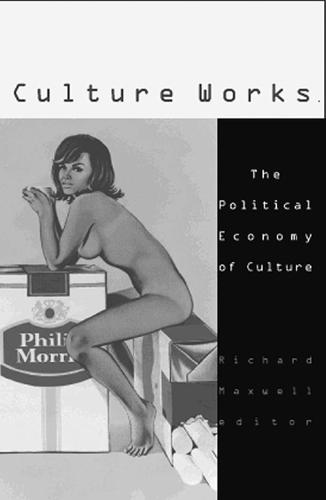
Culture works: the political economy of culture
by
Richard Maxwell
Published 15 Jan 2001
Available: http://ajr.newslink.org/ajrjdsept98.html (July 25, 1999); USWeb and Rick E. Bruner, Net Results: Web Marketing That Works (Indianapolis: Hayden Books, 1998), 245, 274, 303; Nicholas Stein, “New Media, Old Values,” Columbia Journalism Review (July 1999). Available: http://www.cjr.org/year/99/4/ona.asp (July 25, 1999). 49. Howard Rheingold, The Virtual Community (Reading, Mass.: Addison-Wesley, 1993). 50. USWeb and Bruner, Net Results, 159–62, 270–71. 51. Shapiro and Varian, Information Rules, 35. 52. USWeb and Bruner, Net Results, 283. 53. Ibid., 40. 54. Vincent Mosco, The Political Economy of Communication (London: Sage Publications, 1996), 150–56. 55.
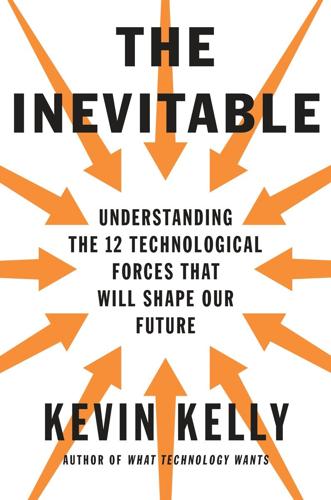
The Inevitable: Understanding the 12 Technological Forces That Will Shape Our Future
by
Kevin Kelly
Published 6 Jun 2016
As innovation expert Larry Keeley once observed: “No one is as smart as everyone.” Or as Clay Shirky puts it: “Here comes everybody!” Should we simply let the “everyone” in the audience create the online magazine themselves? Should editors step back and just approve what the wisdom of the crowd creates? Howard Rheingold, a writer and editor who had been living online for a decade before Wired, was one of many pundits who argued that it was now possible to forget the editor. Go with the crowd. Rheingold was at the forefront of the then totally radical belief that content could be assembled entirely from the collective action of amateurs and the audience.
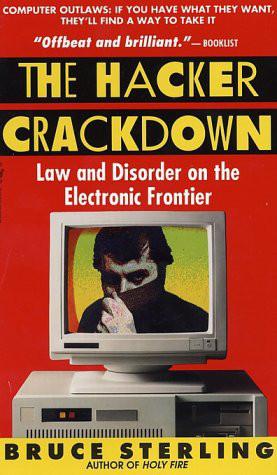
The Hacker Crackdown
by
Bruce Sterling
Published 15 Mar 1992
Point Foundation started its yearly Hackers Conference, and began to take an extensive interest in the strange new possibilities of digital counterculture. CoEvolution Quarterlyfolded its teepee, replaced by Whole Earth Software Review and eventually by Whole Earth Review (the magazine's present incarnation, currently under the editorship of virtual-reality maven Howard Rheingold). 1985 saw the birth of the "WELL"—the "Whole Earth 'Lectronic Link." The Well was Point Foundation's bulletin board system. As boards went, the Well was an anomaly from the beginning, and remained one. It was local to San Francisco. It was huge, with multiple phonelines and enormous files of commentary.
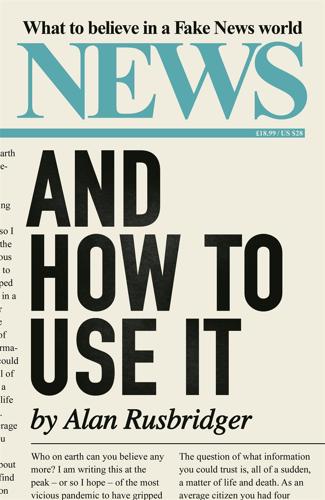
News and How to Use It: What to Believe in a Fake News World
by
Alan Rusbridger
Published 26 Nov 2020
Quite how people who make a living from the professional exercise of their skills will distinguish their own craft from the efforts of millions of others is a big, wide-open, gaping question. CRAP DETECTION ‘The first thing we all need to know about information online is how to detect crap, a technical term I use for information tainted by ignorance, inept communication, or deliberate deception.’ This was from Howard Rheingold’s 2009 essay ‘Crap Detection 101’, which itself was an homage to Ernest Hemingway’s dictum: ‘The most essential gift for a good writer is a built-in, shockproof, shit detector.’ ‘Learning to be a critical consumer of Web info is not rocket science,’ continued Rheingold. ‘It’s not even algebra.
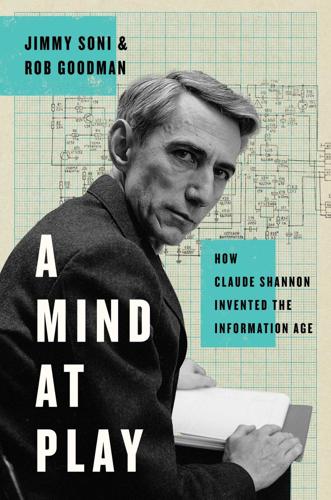
A Mind at Play: How Claude Shannon Invented the Information Age
by
Jimmy Soni
and
Rob Goodman
Published 17 Jul 2017
(New York: Holt, Rinehart & Winston, 1970), 22. epicure enough: Thornton C. Fry, interviewed by La Porte, Pollak, and Price, January 3–4, 1981, 95. “At first thought”: David A. Mindell, “Automation’s Finest Hour: Bell Labs and Automatic Control in WWII,” IEEE Control Systems 15 (1995): 72. “I found myself”: Quoted in Howard Rheingold, Tools for Thought (Cambridge, MA: MIT Press, 2000), 103–4. “if my potentiometer”: Quoted in Glenn Zorpette, “Parkinson’s Gun Director,” IEEE Spectrum 26, no. 4 (1989): 43. “I think England”: Shannon, interviewed by Hagemeyer, February 28, 1977. “The wartime efforts”: Mindell, “Automation’s Finest Hour,” 78.

A People’s History of Computing in the United States
by
Joy Lisi Rankin
The most comprehensive work on Engelbart is Thierry Bardini, Bootstrapping: Douglas Engelbart, Coevolution, and the Origins of Personal Computing (Stanford, CA: Stanford University Press, 2000). The demonstration is viewable at https://w ww.youtube.com /watch?v = y JDv-z dhzMY. Many works describe it, including Howard Rheingold, Tools for Thought: The P eople and Ideas behind the Next Computer Revolution (New York: Simon & Schuster, 1985); and John Markoff, What the Dormouse Said: How the Sixties Counterculture Shaped the Personal Computer Industry (New York: Viking, 2005). 98. Alan Kay, “The Early History of Smalltalk,” in History of Programming Languages II, ed.

Dawn of the New Everything: Encounters With Reality and Virtual Reality
by
Jaron Lanier
Published 21 Nov 2017
If you pay attention, you’ll find cameos of me in early cyberpunk novels. My head might float by. Flattering Mirror Fiction about VR has mostly been quite dark ever since cyberpunk. The Matrix movies; Inception. Meanwhile, norms for tech journalism became hell-bent on positivity. VR engaged a new generation of journalists, like Steven Levy, Howard Rheingold, Luc Sante, and Mondo 2000’s Ken Goffman, aka R. U. Sirius. I’ll highlight two figures who were particularly influential as well as dear to me: Kevin Kelly and John Perry Barlow. Kevin is a fine example of a trusted friend with whom I disagree completely. When I met him, he was editing and writing in publications connected to Stewart Brand’s world, post–Whole Earth Catalog; he later became the first editor in chief of Wired.

Dreaming in Code: Two Dozen Programmers, Three Years, 4,732 Bugs, and One Quest for Transcendent Software
by
Scott Rosenberg
Published 2 Jan 2006
It is available at http://www.theatlantic.com/doc/194507/bush. My account of Douglas Engelbart’s work draws on readings from his work collected at the Bootstrap Institute Web site at http://www.bootstrap.org/, as well as the accounts in Thierry Bardini, Bootstrapping (Stanford University Press, 2000); Howard Rheingold, Tools for Thought (Simon & Schuster, 1985); and John Markoff, What the Dormouse Said (Viking, 2005). The video of Engelbart’s 1968 demo is at http://sloan.stanford.edu/mousesite/1968Demo.htm. “store ideas, study them”: From the Invisible Revolution Web site, devoted to Engelbart’s ideas, at http://www.invisiblerevolution.net/nls.htm.

Makers and Takers: The Rise of Finance and the Fall of American Business
by
Rana Foroohar
Published 16 May 2016
National Center on Education Statistics, “Table 318.30: Bachelor’s, master’s, and doctor’s degrees conferred by postsecondary institutions, by sex of student and discipline division: 2011–12.” 19. Off-the-record interview with Columbia University student for this book. 20. Author interview with Lutz for this book. 21. Robert S. Kaplan, “The Topic of Quality in Business School Education and Research,” Selections (Autumn 1991): 13–22; Howard Rheingold, Virtual Reality (New York: Summit Books, 2001). 22. John R. Graham, Campbell R. Harvey, and Shivaram Rajgopal, “Value Destruction and Financial Reporting Decisions,” Financial Analysts Journal 62, no. 6 (December 2006): 8. 23. Anthony J. Mayo, Nitin Nohria, and Laura G. Singleton, Paths to Power: How Insiders and Outsiders Shaped American Business Leadership (Boston: Harvard Business School Press, 2006). 24.

Life Inc.: How the World Became a Corporation and How to Take It Back
by
Douglas Rushkoff
Published 1 Jun 2009
Katinka Matson Richard Metzger John Brockman Jay Babcock Will Murphy Steven Johnson Dan Hind Eamon Dolan Shawn Kittelsen Amy Hertz Janine Saunders Gillian Blake Sally Marvin Bálazs Szekfü Ramona Pringle Media-Squatters Nick Hasty Suzan Eraslan Lian Amaris David Lanphier, Jr. Ari Wallach Felipe Ribeiro Andrew Mayer Fernando Cervantes Bernard Lietaer Armanda Lewis Howard Rheingold David Pescovitz John Merryman Jonathan Taylor Propaganda Lance Strate John Leland John Rogers Darren Sharp Jules Marshall Amy Sohn Christina Amini Jason Liszkiewicz Jeff Newelt Kevin Werbach Xeni Jardin Timothy Mohn Anaid Gomez-Ortigoza Matthew Burton Max Brockman Josh Klein Russel Weinberger Jeff Gordiner Helen Churko Getachew Mengistie Courtney Turco Justin Vogt Joost Raessens Nancy Hechinger Rachel Dretzen Benjamin Kirshbaum Barak Goodman Ken Miller Naomi Klein David Feuer Kate Norris and, most of all, Barbara and Mamie Rushkoff NOTES CHAPTER ONE Once Removed: The Corporate Life-Form 4 Most history books recount For the best descriptions of late Middle Ages and Renaissance life and commerce, see Fernand Braudel, The Wheels of Commerce: Civilization and Capitalism, 15th-18th Century (Los Angeles: University of California Press, 1992), and Carlo M.

The Future of the Internet: And How to Stop It
by
Jonathan Zittrain
Published 27 May 2009
See Ross Rubin, Players Scramble for Consumer Market, INTERACTIVE HOME, Sept. 1, 1996; Steve Kovsky & Paula Rooney, Online Service Providers Upgrade UIs, PC WEEK, June 24, 1996, at 14. 18. A Little Microcomputer BBS History, http://www.portcommodore.com/bbshist.php?path=main-cbmidx-bbsidx (last visited June 1, 2007). 19. See HOWARD RHEINGOLD, THE VIRTUAL COMMUNITY, at xxiii-xxiv (1993), available at http://www.rheingold.com/vc/book/intro.html; Jack Rickard, Home-Grown BB$, WIRED, Sept.—Oct. 1993, at 42, available at http://www.wired.com/wired/archive/ 1.04/bbs.html. 20. See Tom Jennings, Fido and FidoNet, http://www.wps.com/FidoNet/index.html (last visited June 1, 2007); Living Internet, Bulletin Board Systems & FidoNet, http://www.livinginternet.eom/u/ui_fidonet.htm (last visited June 1, 2007). 21.

Convergence Culture: Where Old and New Media Collide
by
Henry Jenkins
Published 31 Jul 2006
T h e w o r l d M c L u h a n f o r e t o l d b a c k in t h e a g e of ' e l e c t r i c m e d i a ' h a s b e c o m e i m m e n s e l y m o r e c o m p l i c a t e d in t o d a y ' s m a n y to-many, converged, remixed and m a s h e d - u p , digital, mobile, a l w a y s - o n m e d i a environment. you are a parent, a student, an educator, a creator or consumer of popular culture, e n t r e p r e n e u r , or a m e d i a industry e x e c u t i v e , y o u n e e d t o u n d e r s t a n d c o n v e r g e n c e culture. If an And you will only after r e a d i n g H e n r y J e n k i n s . " — HOWARD RHEINGOLD, a u t h o r of Smart "I s i m p l y c o u l d n o t put t h i s b o o k d o w n ! new media intersects powerful ways. Culture old m e d i a and Mobs: The Next Social Revolution H e n r y J e n k i n s p r o v i d e s a f a s c i n a t i n g a c c o u n t of h o w e n g a g e s the imagination of f a n s in m o r e E d u c a t o r s , m e d i a s p e c i a l i s t s , policy m a k e r s a n d p a r e n t s will find and more Convergence both lively a n d e n l i g h t e n i n g . " — J O H N SEELY BROWN, Former Chief Scientist, Xerox C o r p & director of Xerox P A R C W I N N E R O F T H E 2007 S O C I E T Y STUDIES KATHERINE SINGER FOR CINEMA KOVACS AND BOOK MEDIA AWARD Media Studies / Cultural Studies NEW YORK UNIVERSITY PRESS W a s h i n g t o n S q u a r e / N e w York, N Y 10003 www.nyupress.org

Multitude: War and Democracy in the Age of Empire
by
Michael Hardt
and
Antonio Negri
Published 1 Jan 2004
For Schumpeter’s theory of crisis, see also “The Analysis of Economic Change,” Review of Economic Statistics 17, (May 1935): 2-10; and “Theoretical Problems of Economic Growth,” Journal of Economic History 7 (November 1947): 1-9. 119 See Antonio Damasio, Looking for Spinoza: Joy, Sorrow, and the Feeling Brain (New York: Harcourt, 2003). 120 Eric Raymond, The Cathedral and the Bazaar (Sebastopol, CA: O’Reilly, 1999). For another technology-based analysis of how people are increasingly able to create collaboratively in networks, see Howard Rheingold, Smart Mobs (New York: Basic, 2002). 121 Thomas Hobbes, On the Citizen, trans. Richard Tuck and Michael Siverthorne (Cambridge: Cambridge University Press, 1998), chapter 14. 122 Gilles Deleuze and Claire Parnet, Dialogues II, trans. Hugh Tomlinson and Barbara Habberjam (New York: Columbia University Press, 2002), 136, translation modified. 123 Ward Churchill argues against pacifist politics but assumes that the only alternative to pacifism is armed struggle in traditional form.
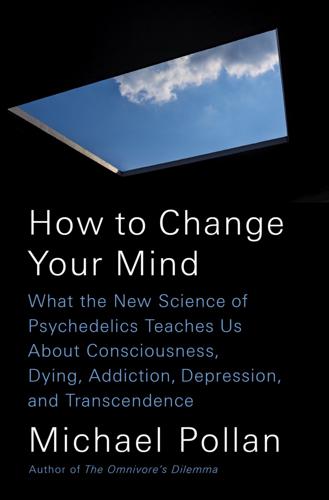
How to Change Your Mind: What the New Science of Psychedelics Teaches Us About Consciousness, Dying, Addiction, Depression, and Transcendence
by
Michael Pollan
Published 30 Apr 2018
Stewart Brand received his own baptism in Hubbard LSD at IFAS in 1962, with James Fadiman presiding as his guide. His first experience with LSD “was kind of a bum trip,” he recalls, but it led to a series of other journeys that reshaped his worldview and, indirectly, all of ours. The Whole Earth Network Brand would subsequently gather together (which included Peter Schwartz, Esther Dyson, Kevin Kelly, Howard Rheingold, and John Perry Barlow) and play a key role in redefining what computers meant and did, helping to transform them from a top-down tool of the military-industrial complex—with the computer punch card a handy symbol of Organization Man—into a tool of personal liberation and virtual community, with a distinctly countercultural vibe.
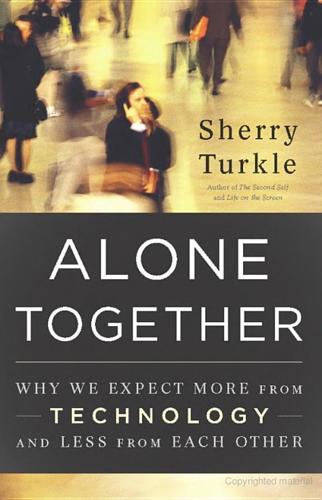
Alone Together
by
Sherry Turkle
Published 11 Jan 2011
One of them was a 17 year old boy.’” See Fantz, “Forgive Us Father.” 8 Ray Oldenberg. The Great Good Place: Cafés, Coffee Ships, Community Centers, Beauty Parlors, General Stores, Bars, Hangouts, and How They Get You Through the Day (New York: Paragon House, 1989). On virtual environments as communities, see Howard Rheingold, The Virtual Community: Homesteading on the Electronic Frontier (Reading, MA: Addison Wesley, 1993). 9 There is, too, the word “world.” Sociologist William Bainbridge, a student of World of Warcraft, takes its title seriously and talks of the game as a world. See William Bainbridge, The Warcraft Civilization: Social Science in a Virtual World (Cambridge, MA: MIT Press, 2010).
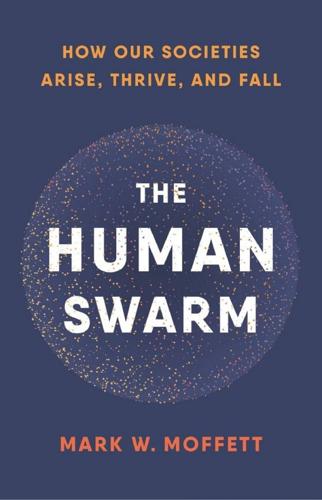
The Human Swarm: How Our Societies Arise, Thrive, and Fall
by
Mark W. Moffett
Published 31 Mar 2019
What brought so many together was a rapid exchange of several million texts reading Go 2 EDSA, wear Blk. The very act of treating such a text as legitimate required trust that those forwarding it were coequals. That day saw the reverse dominance hierarchy firmly back in control in the form of what futurist Howard Rheingold calls a “smart mob.”31 THE ADVANTAGES OF SOCIETIES FOR HUMANS: LIVING IN BANDS Just about every boon of membership in an animal society applies to our species also, in how societies both provide for and protect their members. Consider the matter from the perspective of a band society.

Future Crimes: Everything Is Connected, Everyone Is Vulnerable and What We Can Do About It
by
Marc Goodman
Published 24 Feb 2015
Unfortunately, at the time the sophomore had received his “free” laptop, he was too young to have yet studied the prophetic warning about Greeks bearing gifts, a topic he would likely cover two years later when assigned Virgil’s Aeneid in his senior English class. Candid Camera You can’t assume any place you go is private because the means of surveillance are becoming so affordable and so invisible. HOWARD RHEINGOLD When a public school district, an organ of the state, has the ability to spy on us in our homes at will and without warrant, it is clear the age of pervasive universal surveillance has upon us. From London to New York and Chicago to Beijing, massive video surveillance, or CCTV, networks have been installed to protect us from threats, real and imagined.
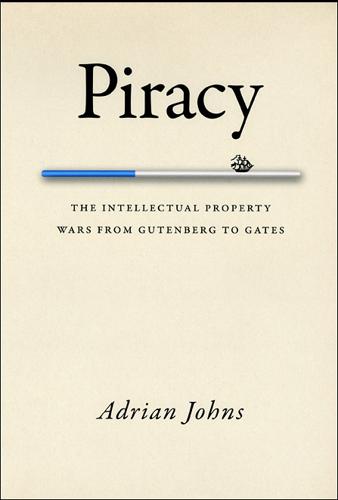
Piracy : The Intellectual Property Wars from Gutenberg to Gates
by
Adrian Johns
Published 5 Jan 2010
It did not take users long to testify that they felt themselves approaching the McLuhanite dream of having the psyche merge into a global electronic net. More influential language for articulating online communities, however, evoked concepts of community and frontier. Their principal exponent, Howard Rheingold, was a WELL veteran who came up with the expression “virtual community” in 1987 in a successor volume to the Whole Earth Catalog. Rheingold’s representation of an emergent frontier domain – at once a village full of diverse skills, bound together by an “informal, unwritten social contract,” and an unsettled landscape of new stakes and homesteads – became probably the most widely adopted model for these pseudosocieties.
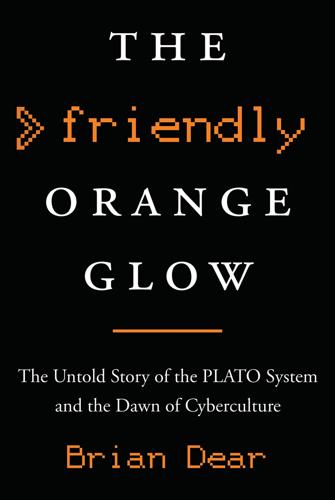
The Friendly Orange Glow: The Untold Story of the PLATO System and the Dawn of Cyberculture
by
Brian Dear
Published 14 Jun 2017
The other population was smaller, tighter, and deeply interconnected: authors and instructors, professors and their grad students, administrators, operators, managers, systems staff, and anyone else with an author signon. This smaller group comprised one of the most vibrant, diverse, and early examples of what writer Howard Rheingold would later call a “virtual community.” It was certainly one of the earliest. Tragically, in one of what would be many cases of the saltwater view denying the freshwater view a chance to be known, the PLATO story went unmentioned in his essential 1993 book The Virtual Community: Homesteading on the Electronic Frontier.
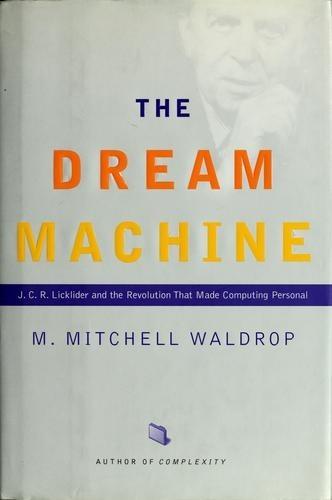
The Dream Machine: J.C.R. Licklider and the Revolution That Made Computing Personal
by
M. Mitchell Waldrop
Published 14 Apr 2001
He was working at a good job at Ames Research in California, where he did electrical engineering for one of NASA's ancestors, the National Advisory Com- mittee on Aeronautics. He had met a girl there. And that very weekend, the two of them had decided to get married. And yet, as Engelbart explained to Howard Rheingold for the latter's 1985 book, Toolsfor Thought, "the Monday after we got engaged, I was driving to work when I was hit with the shocking realization that I no longer had any goals. As a kid who had grown up in the Depression, I was imbued with three goals: get an education, get a steady job, get married.